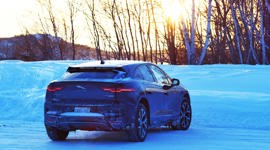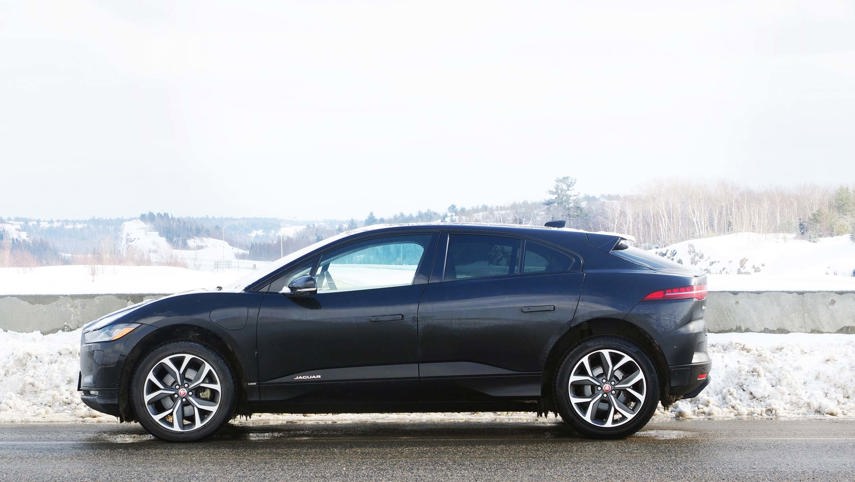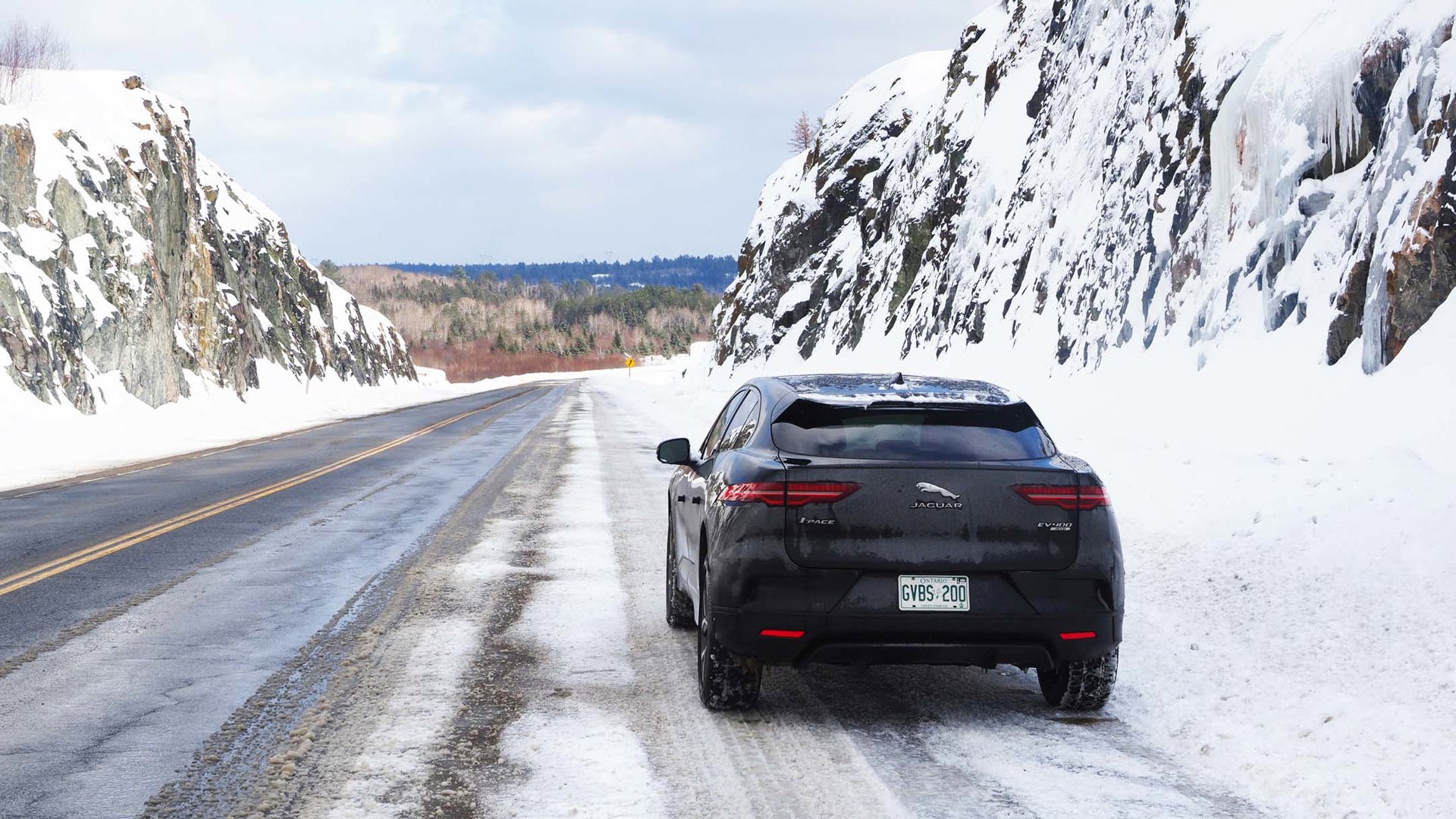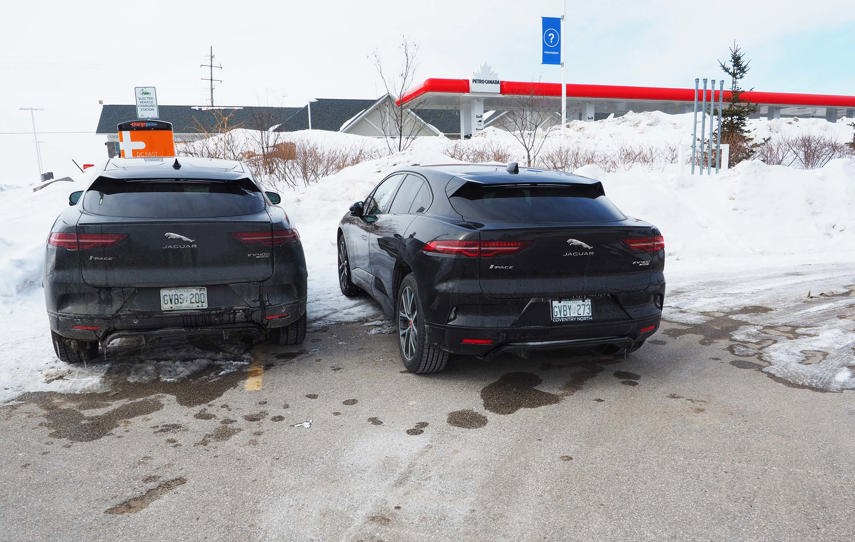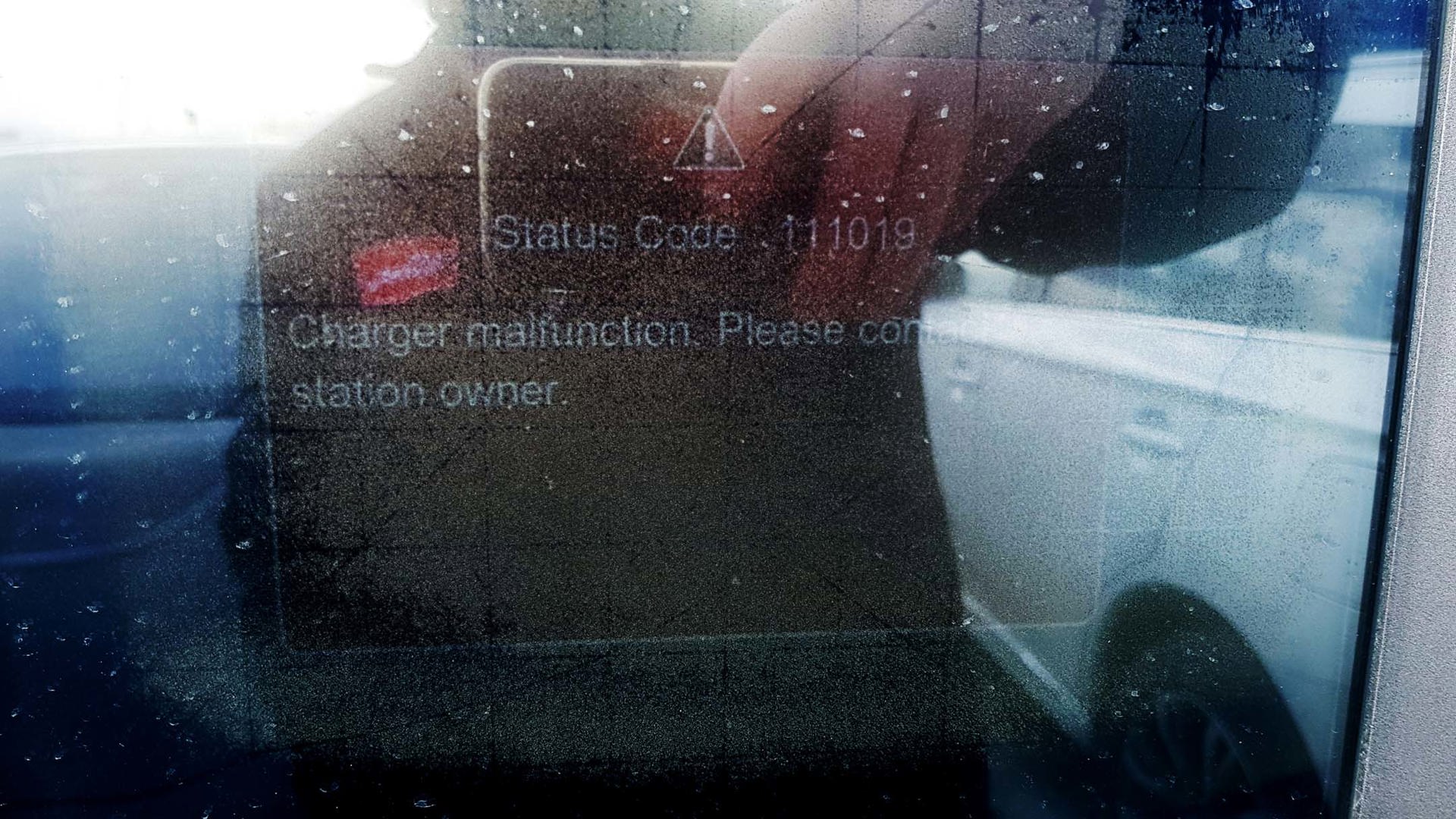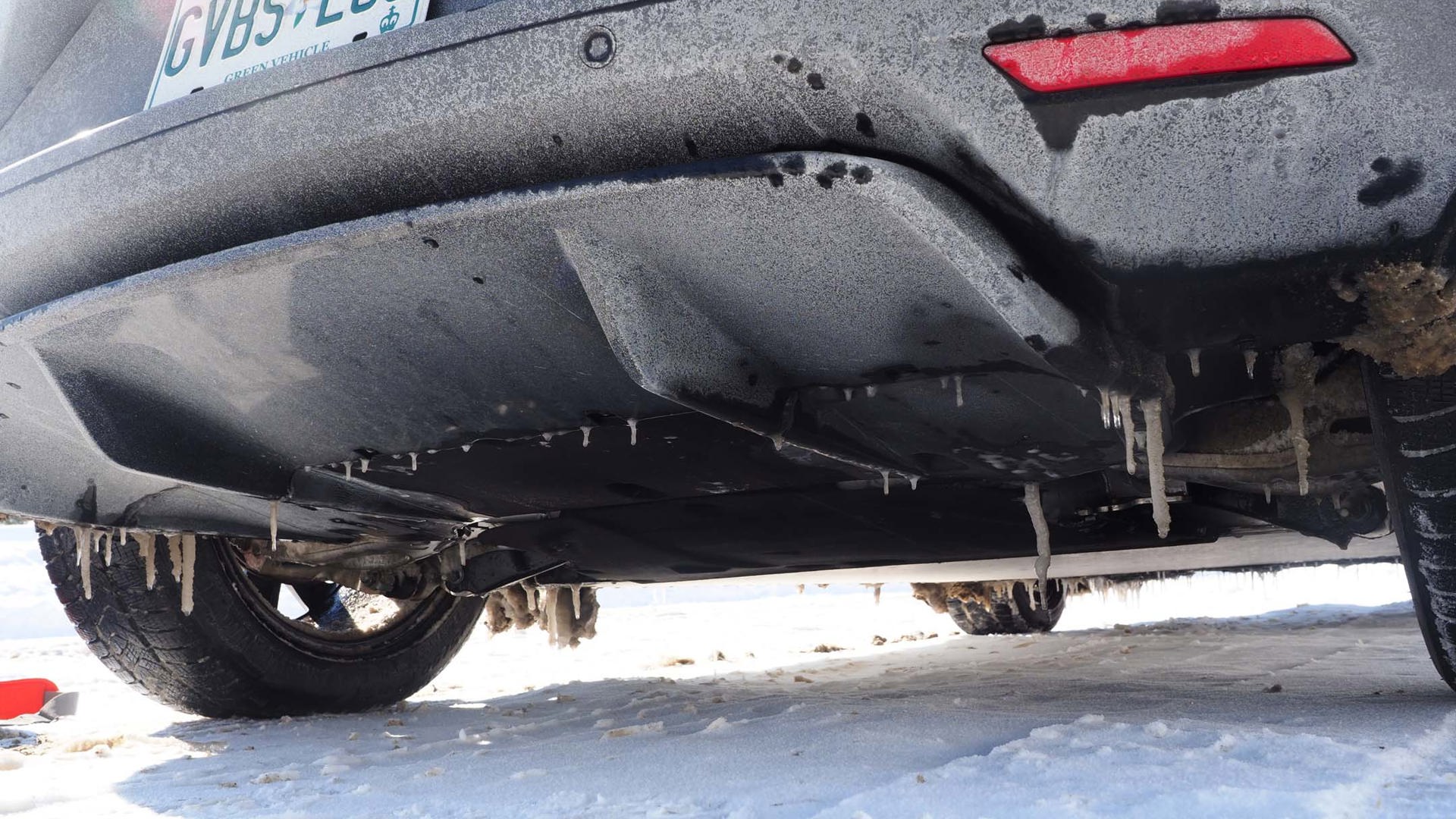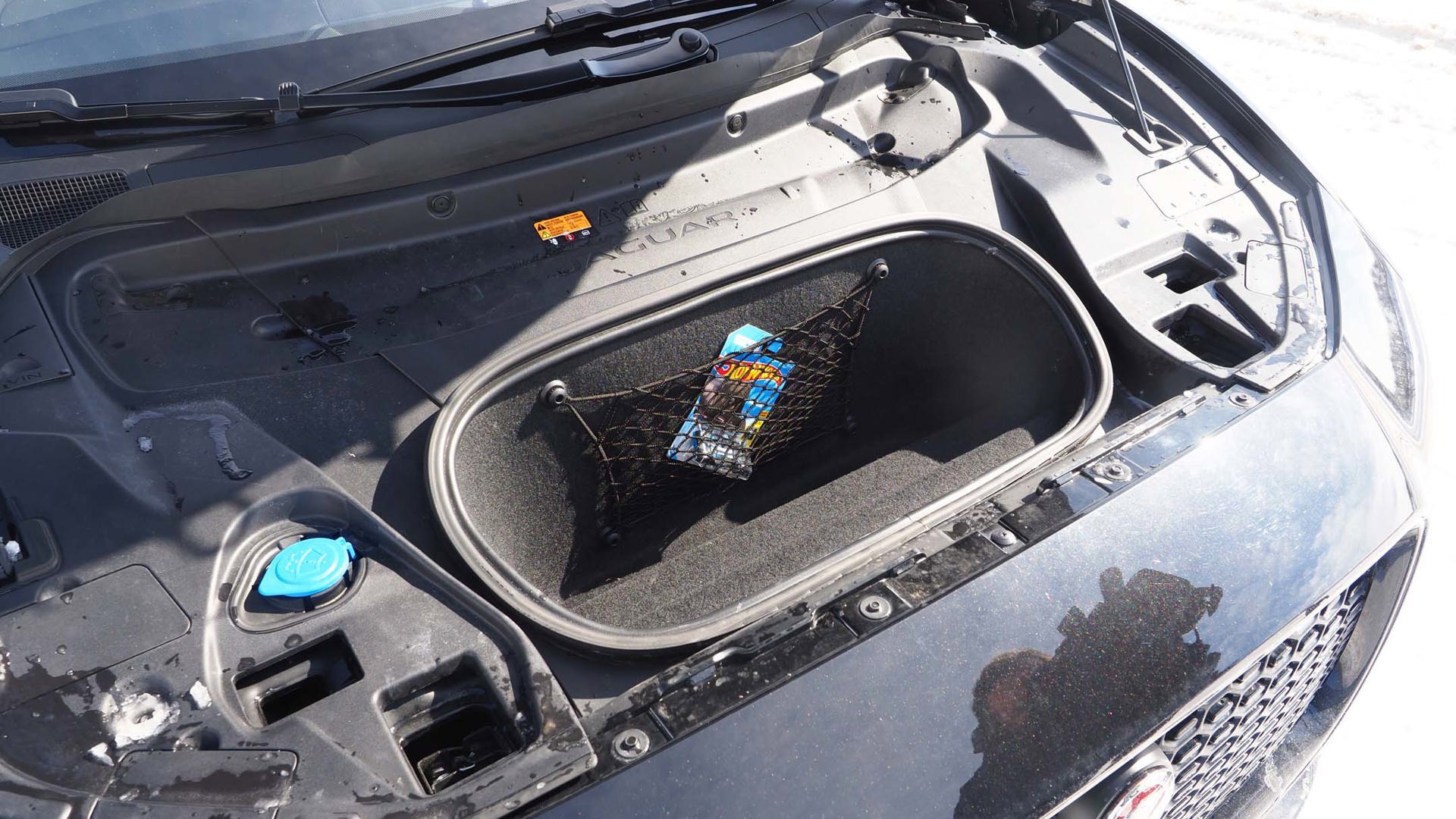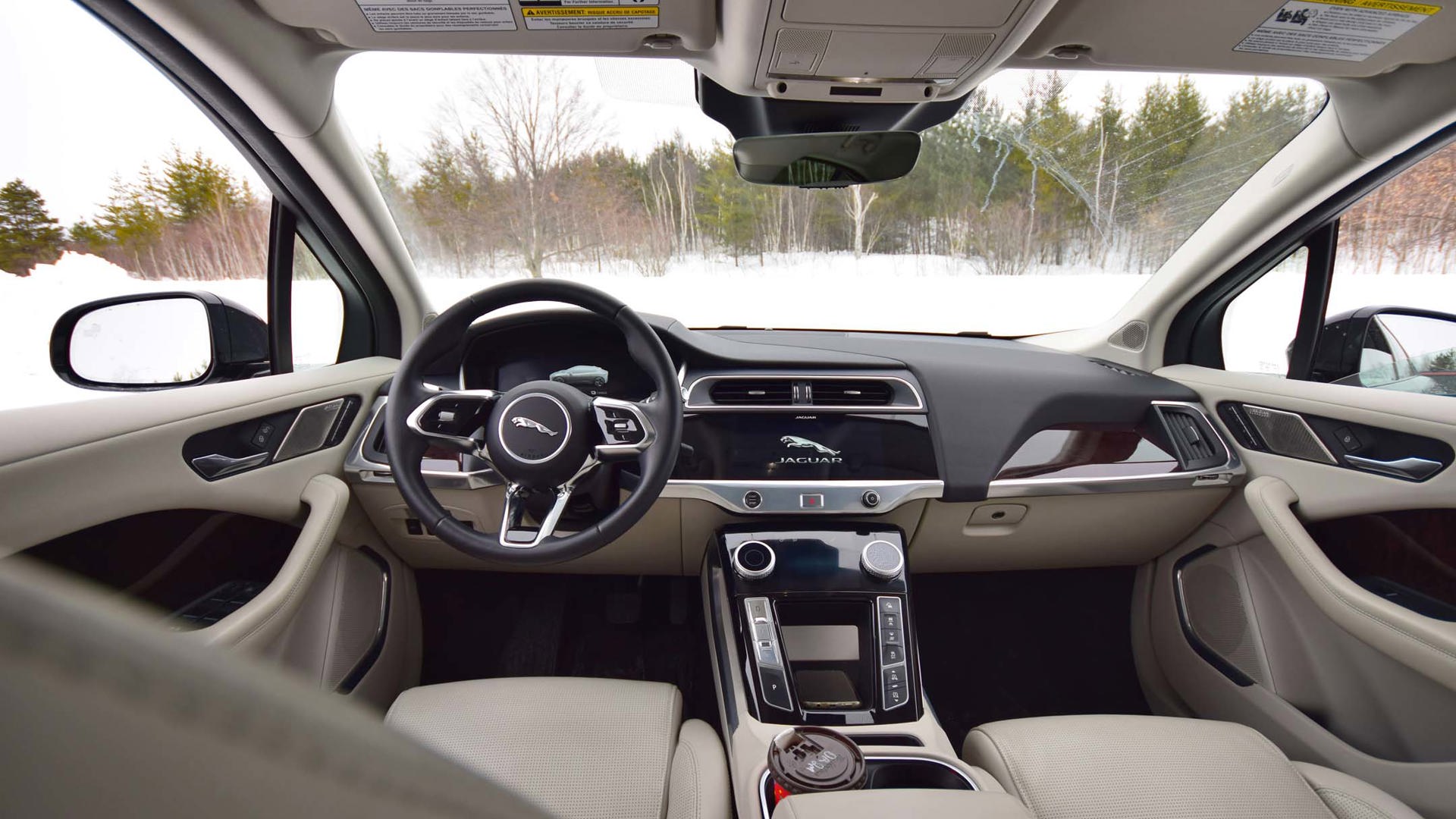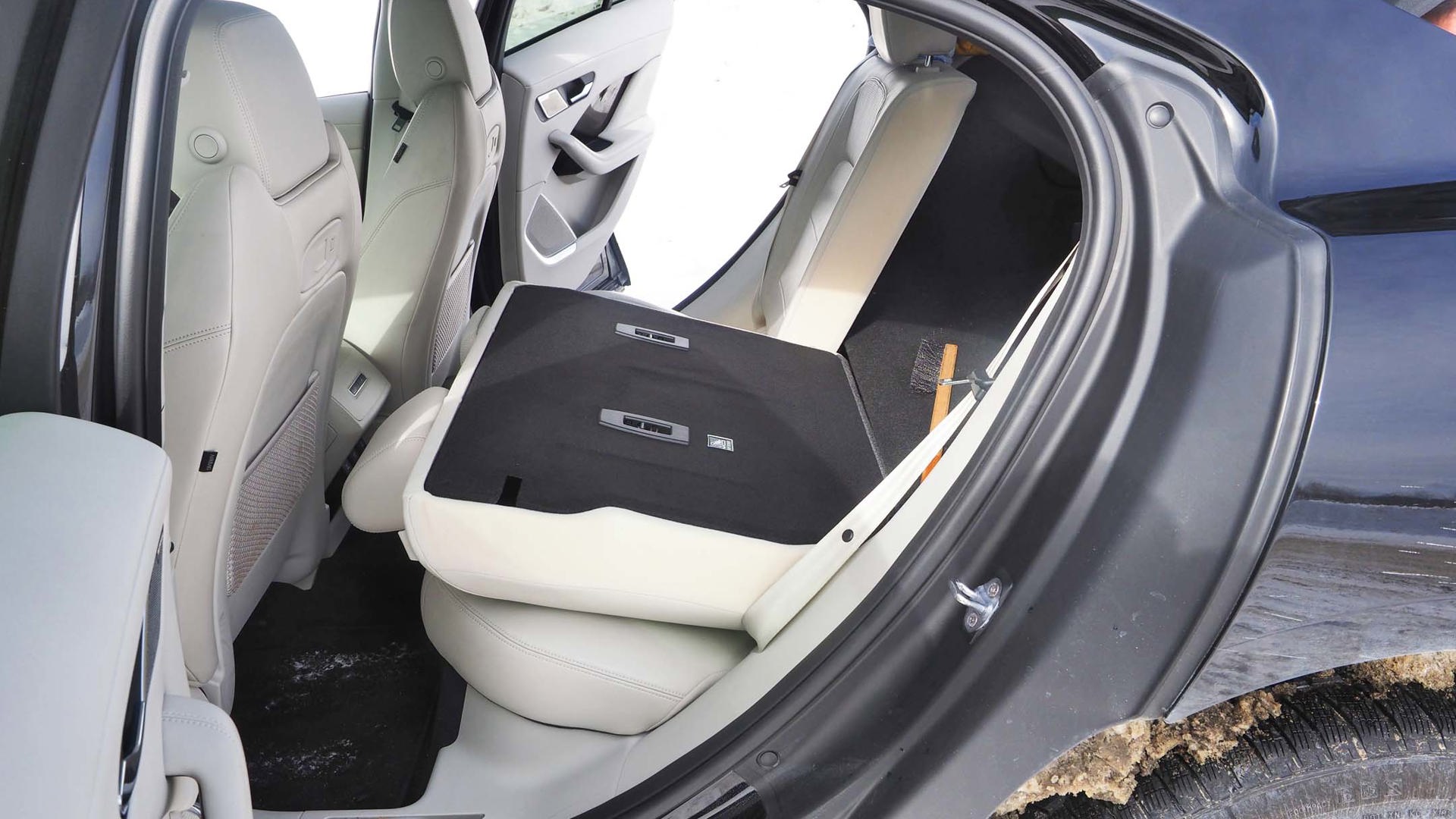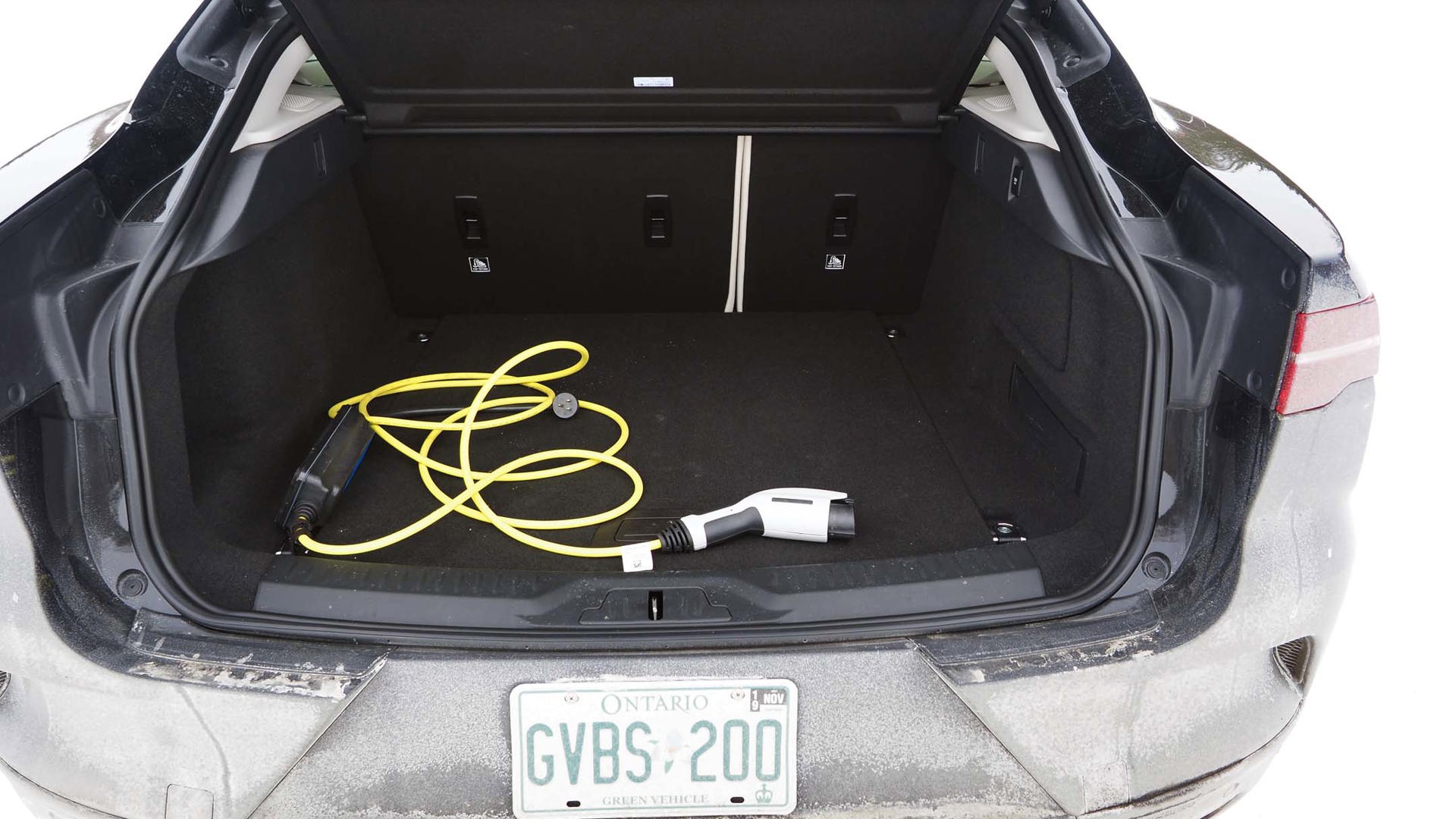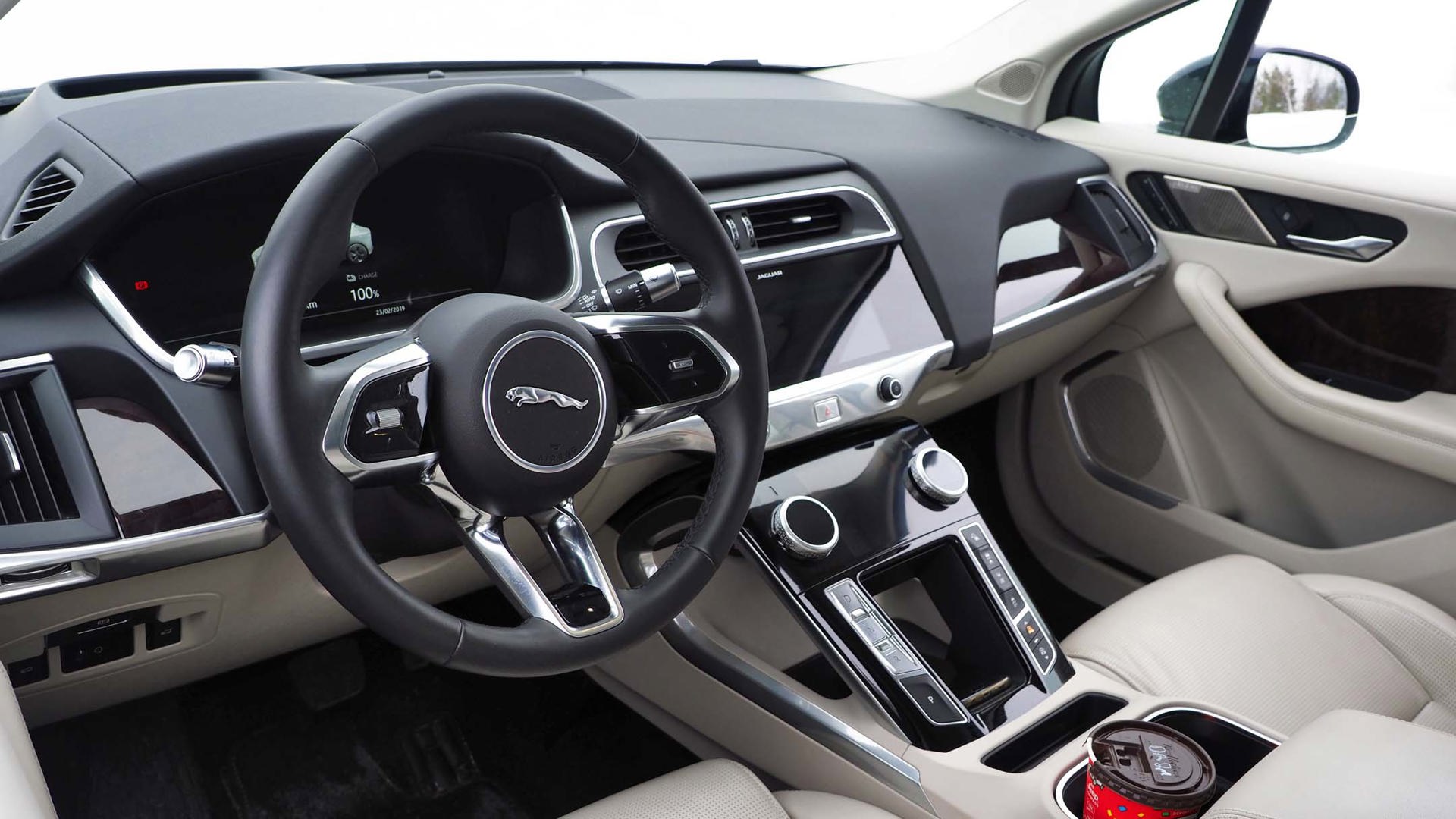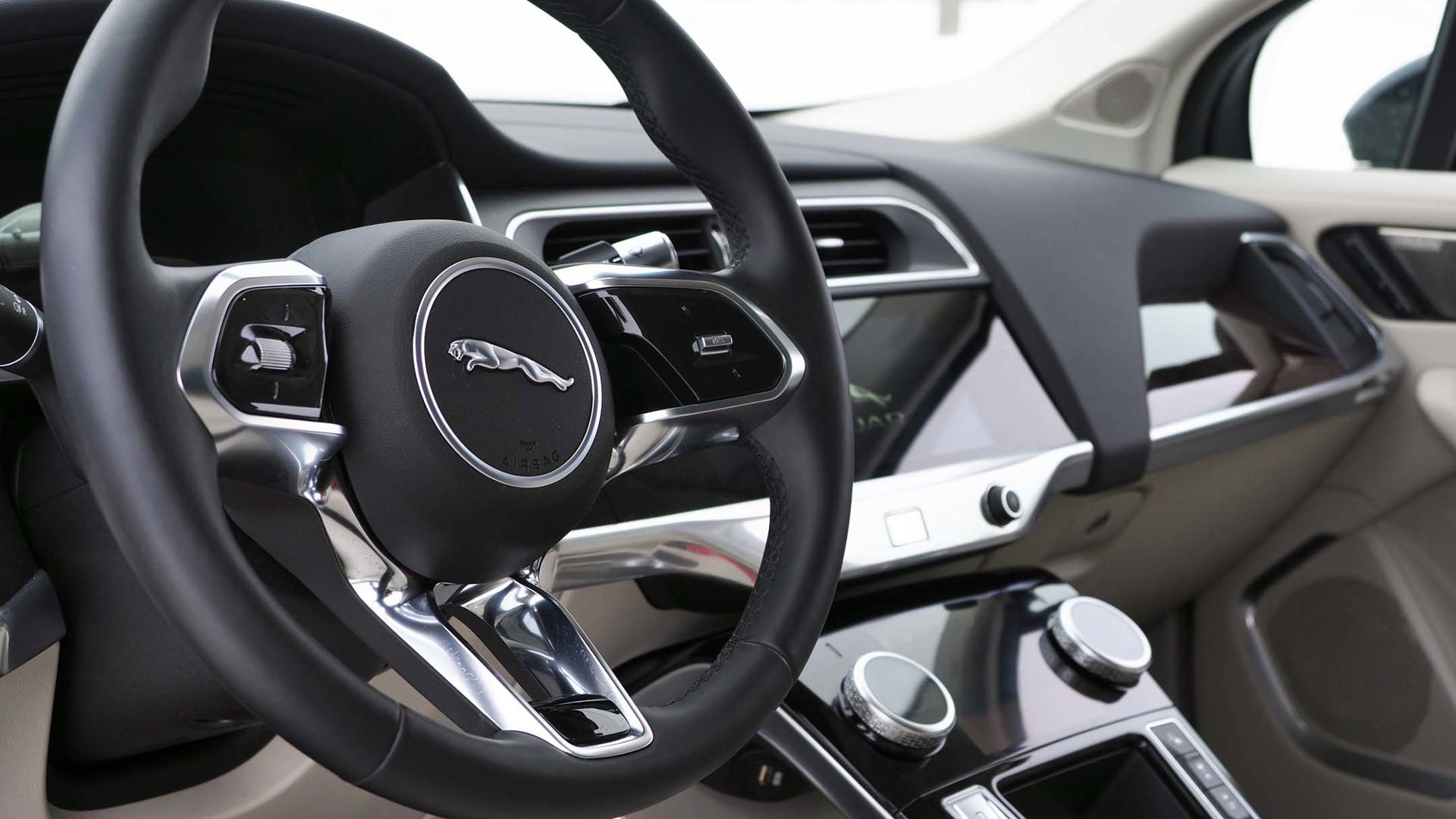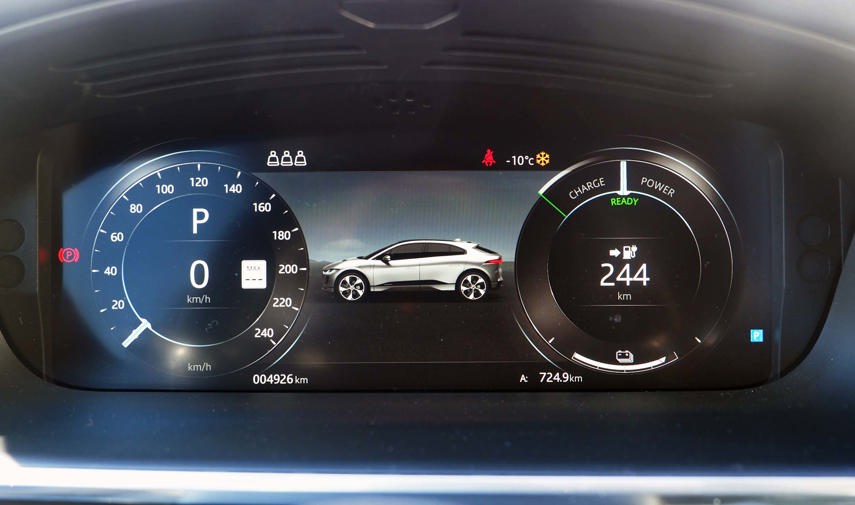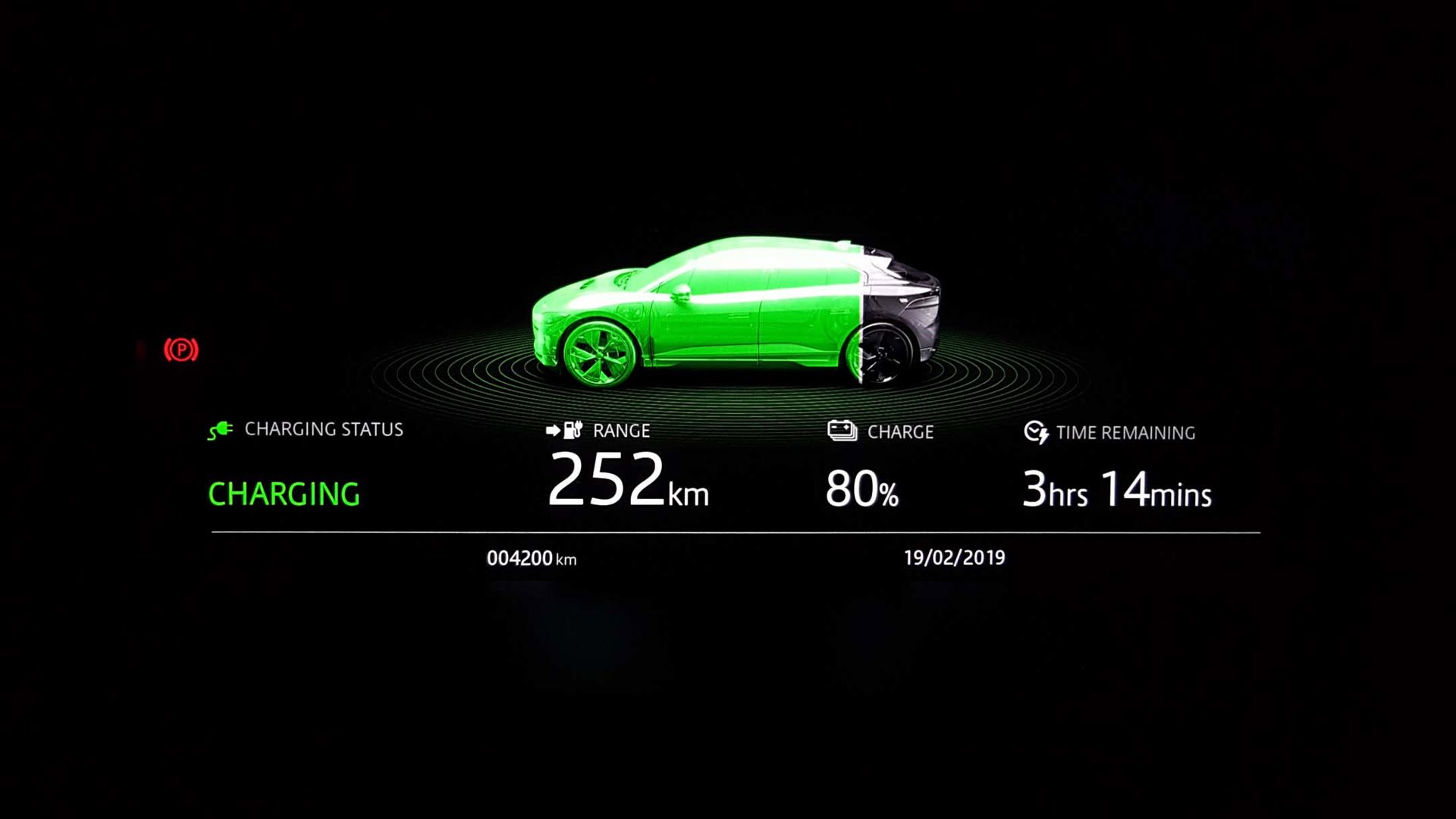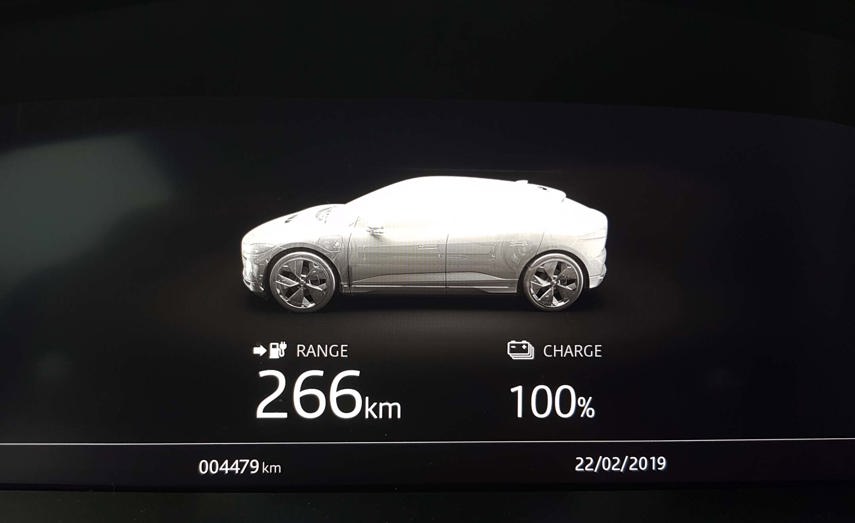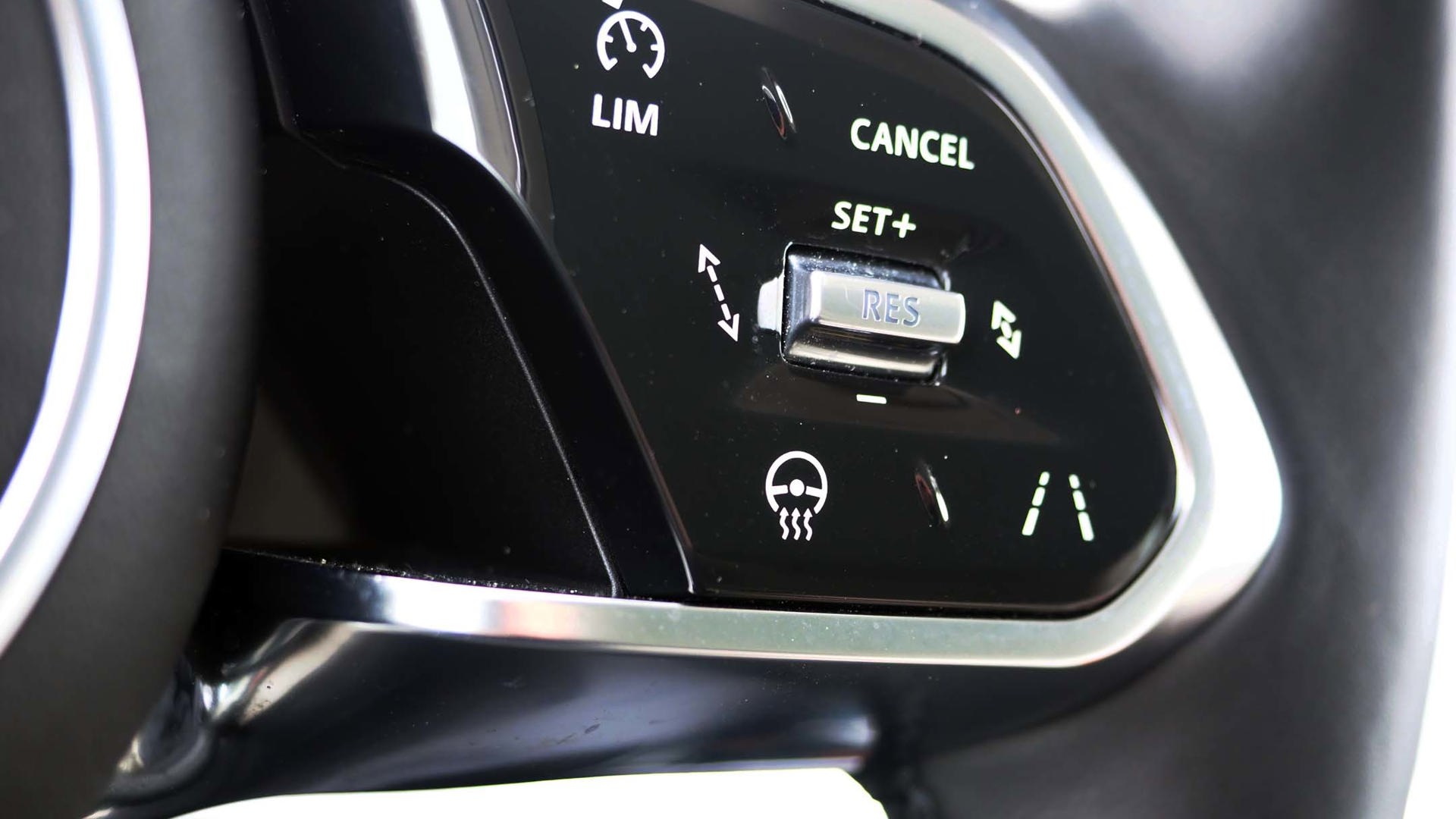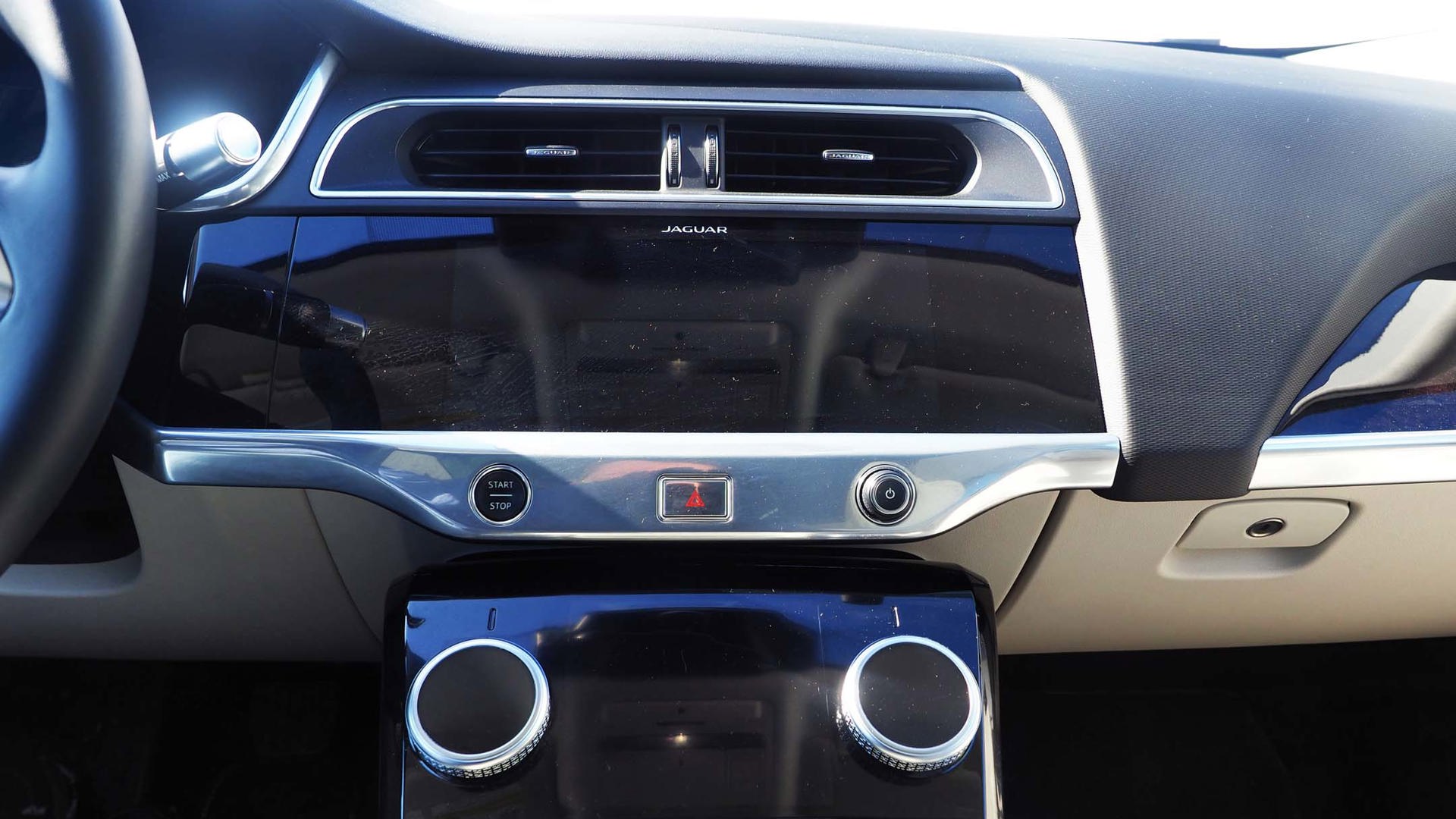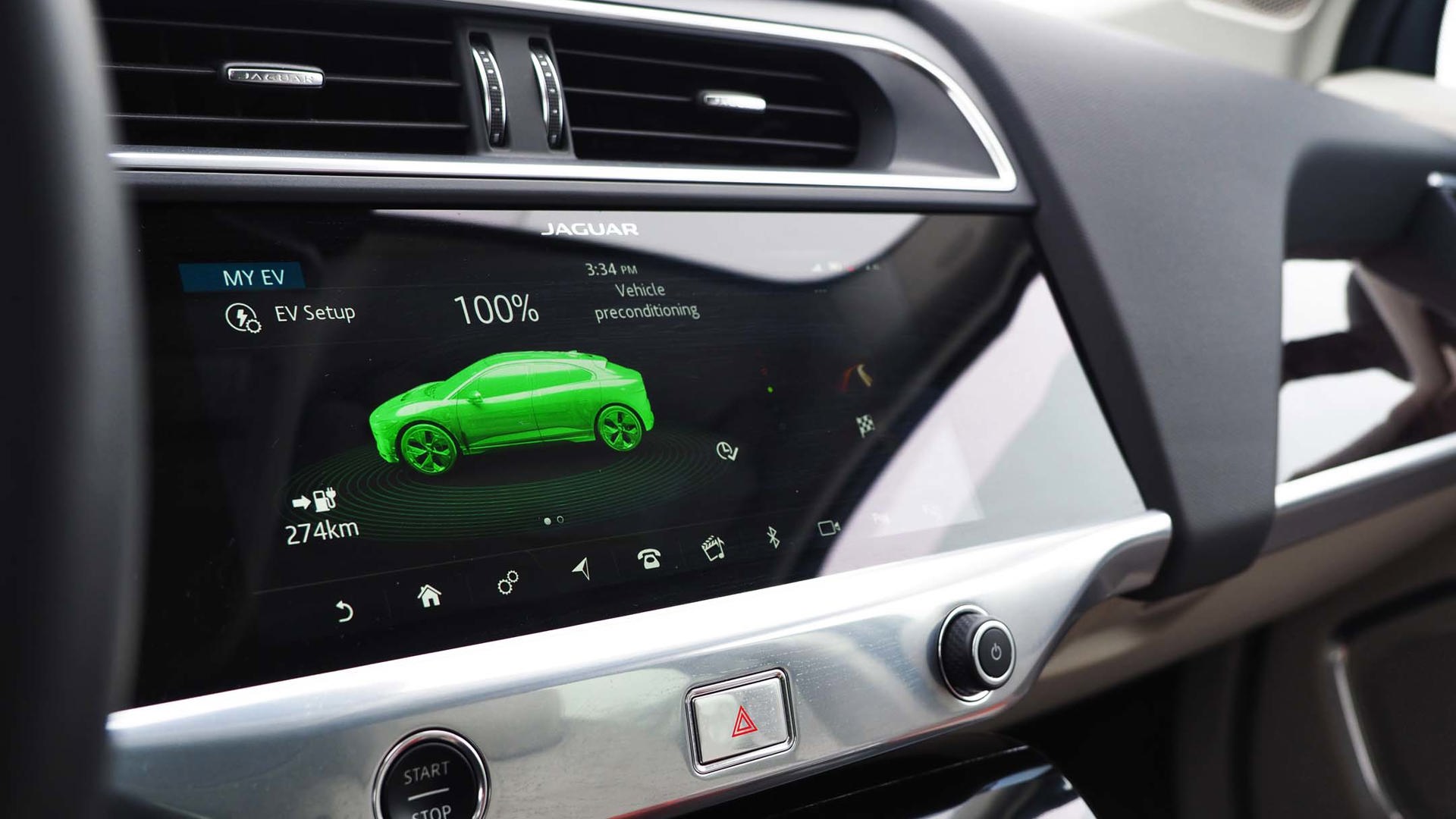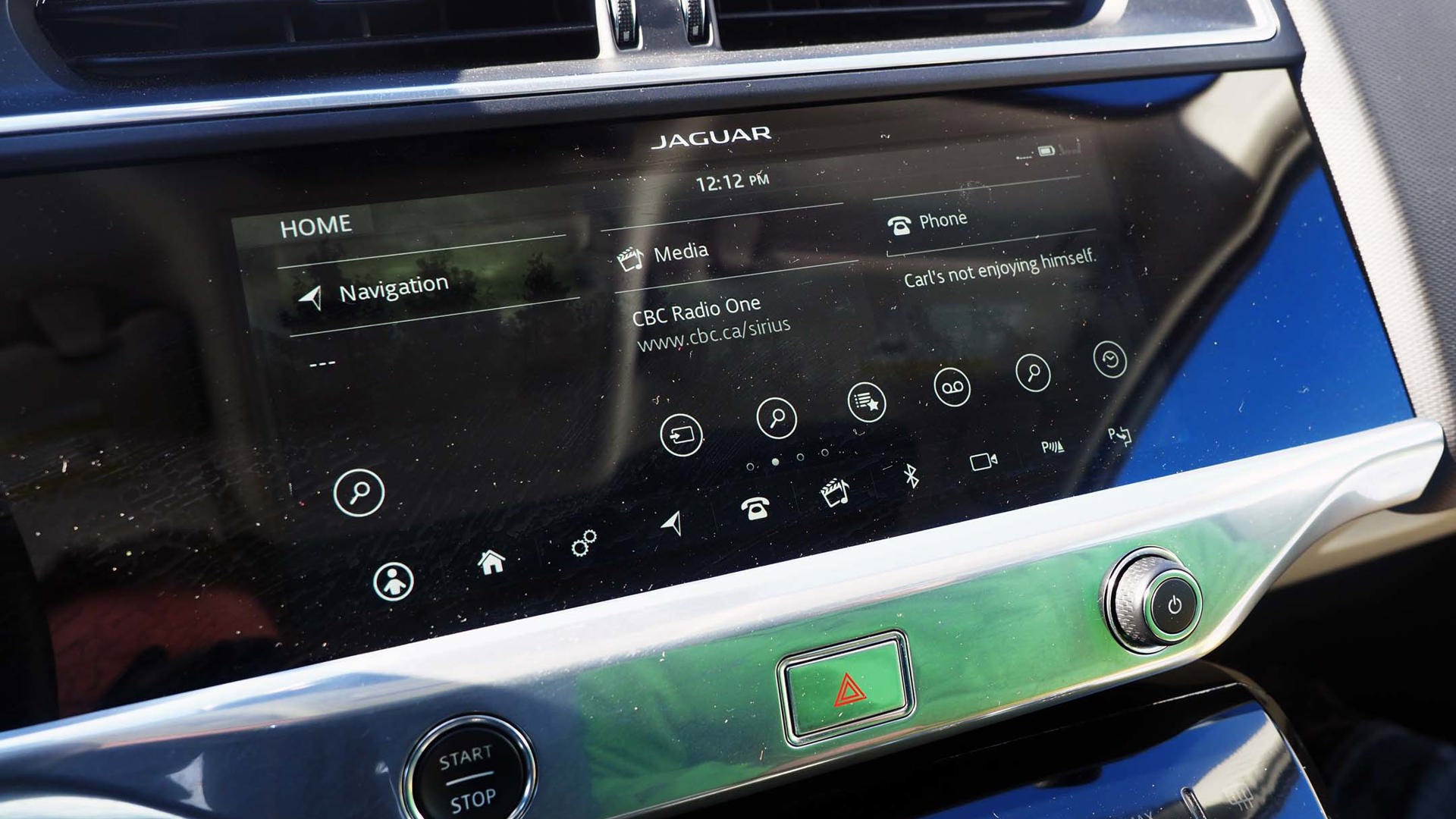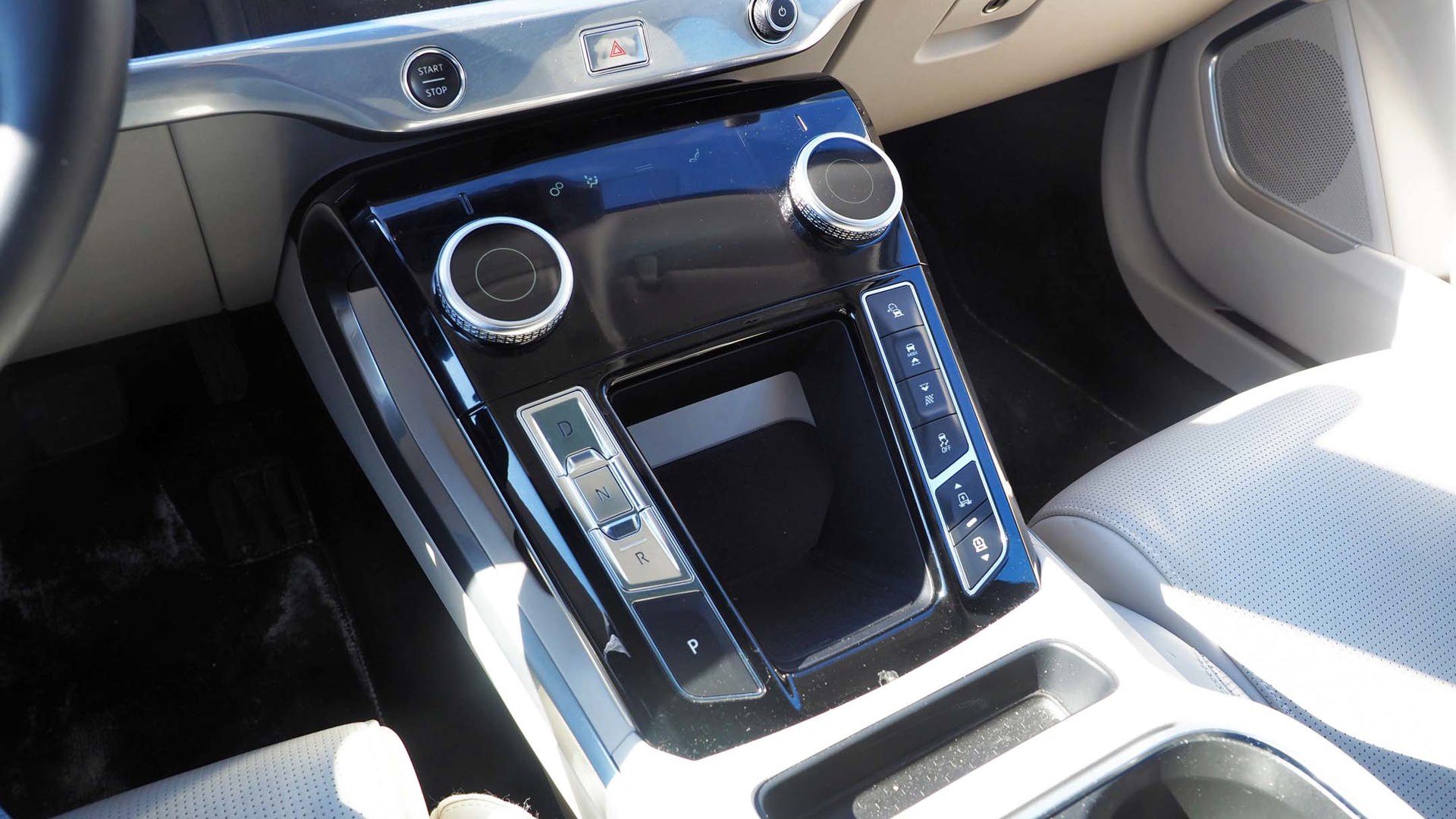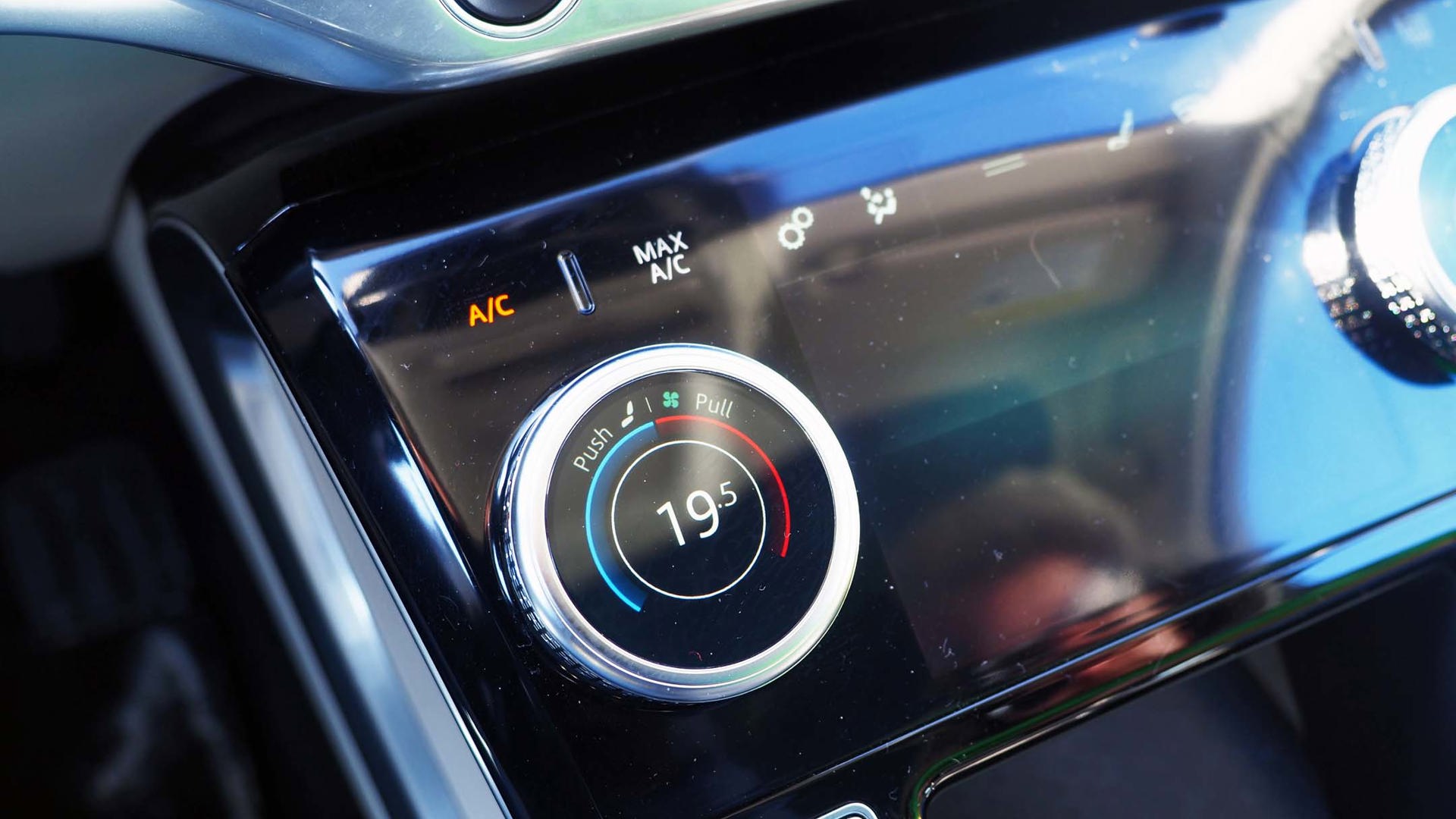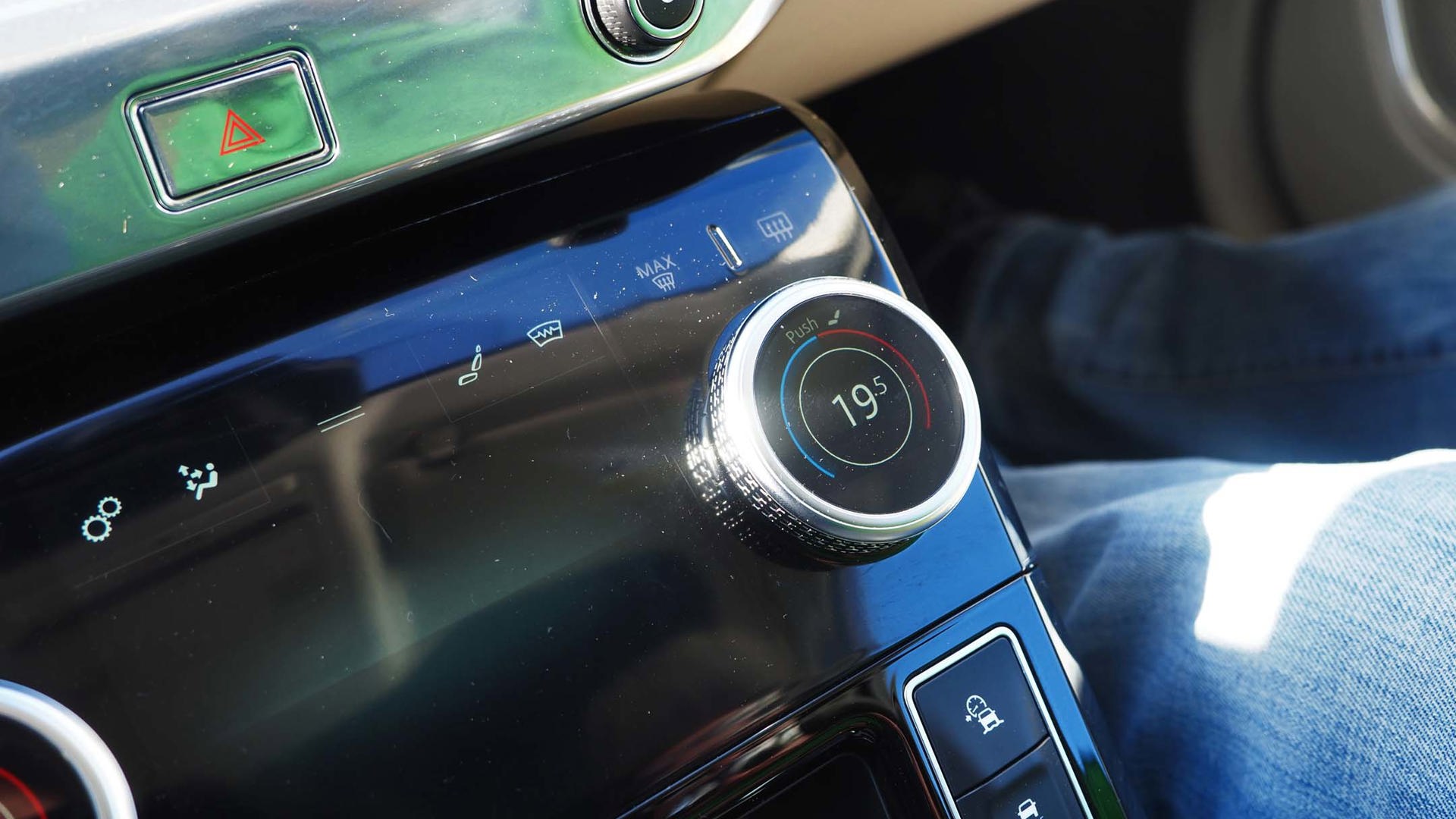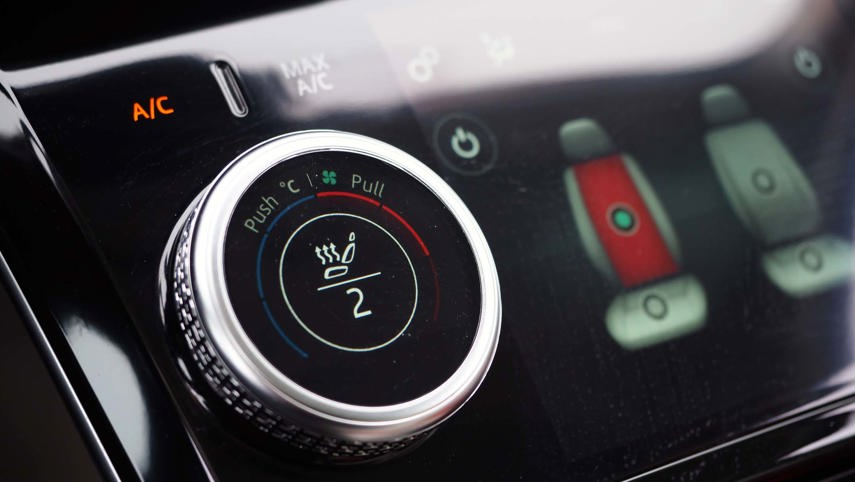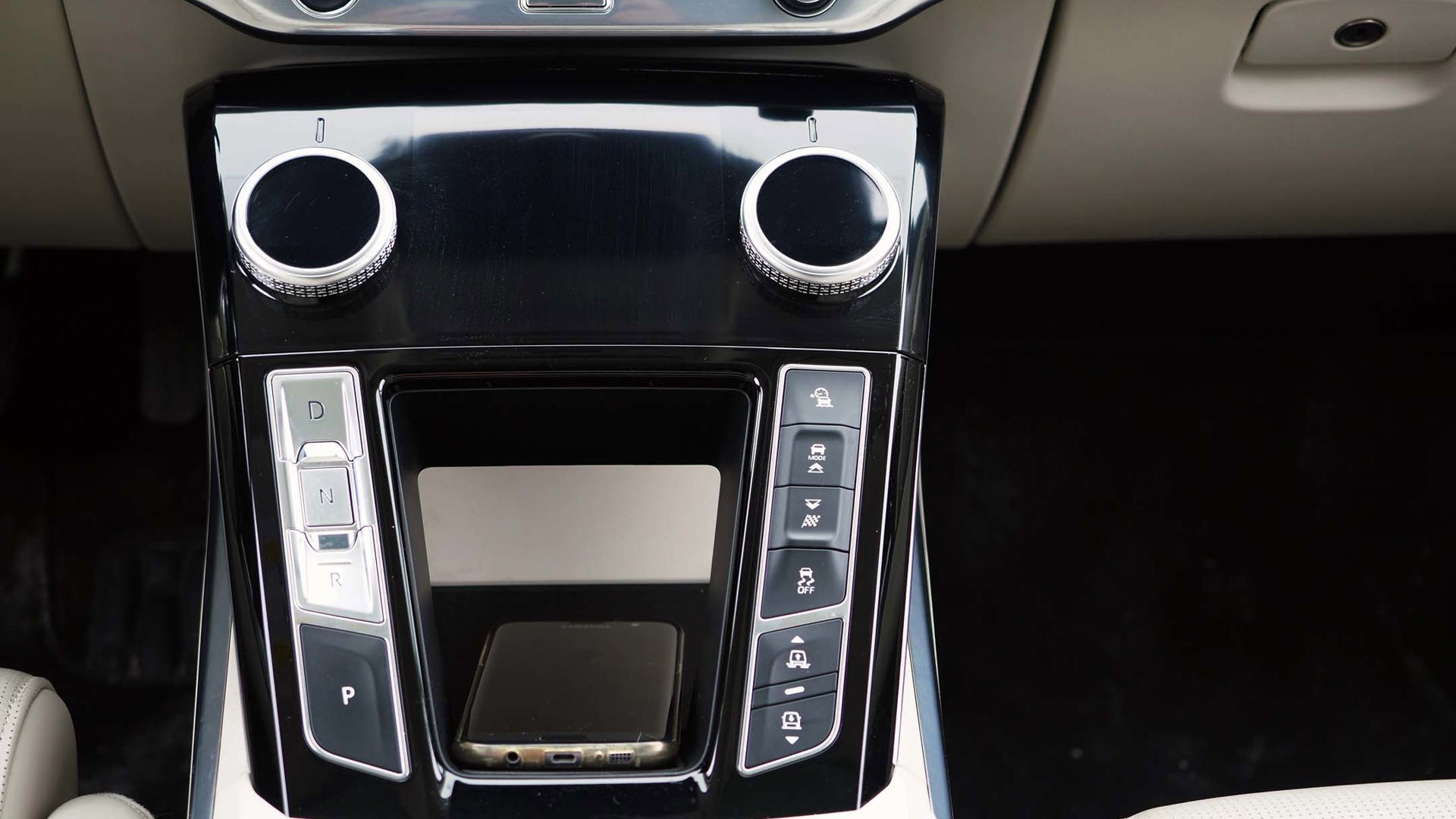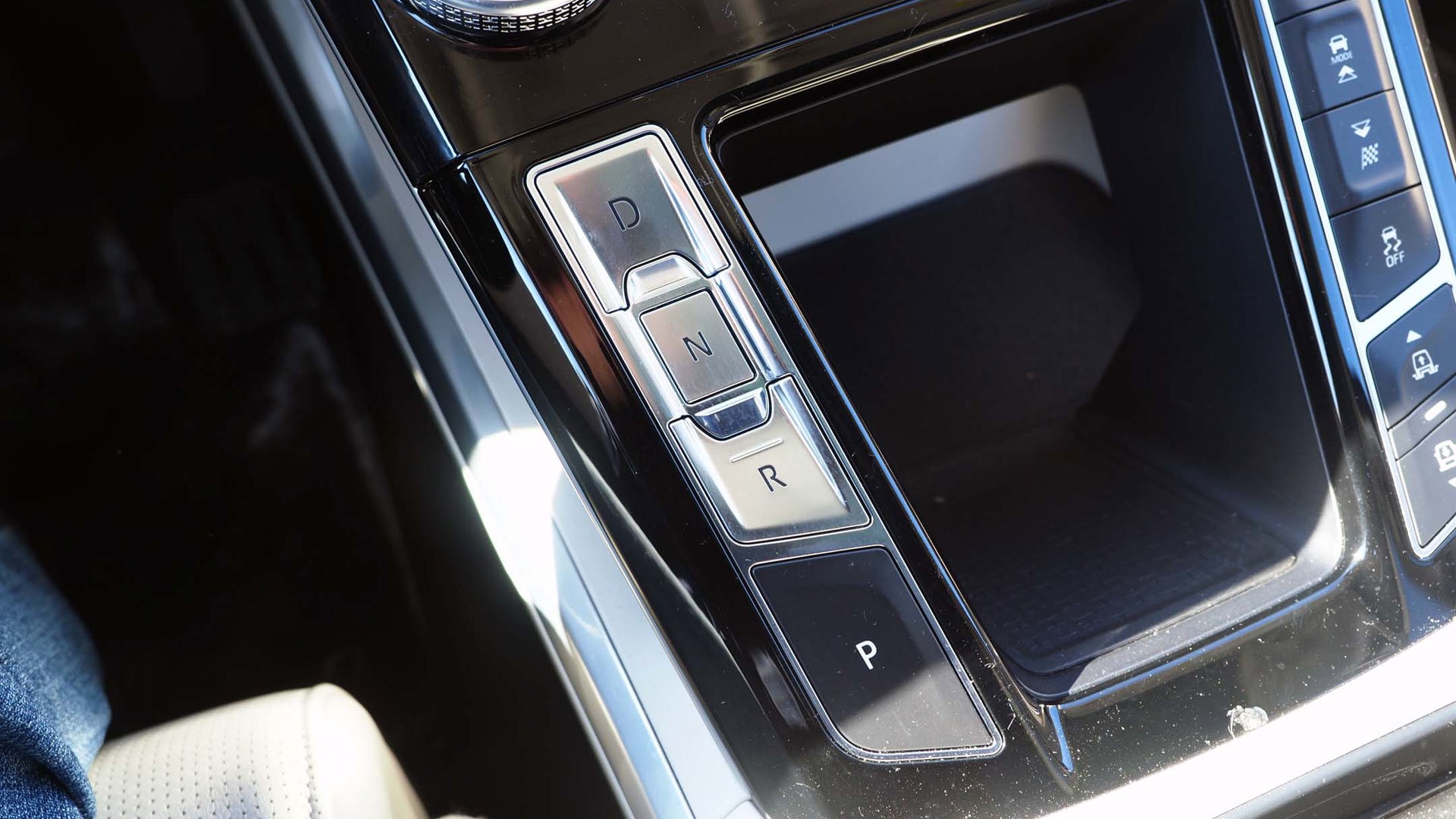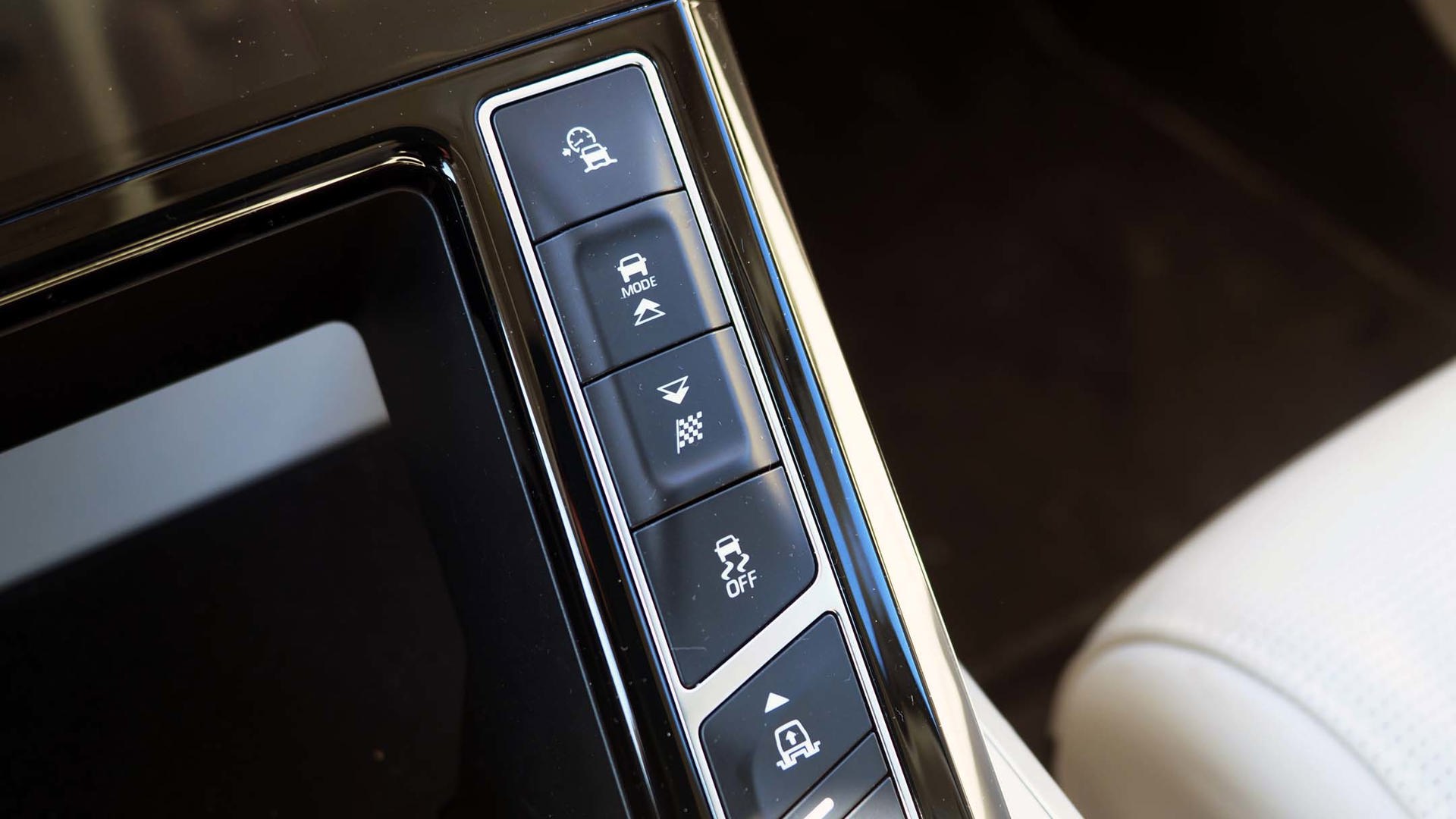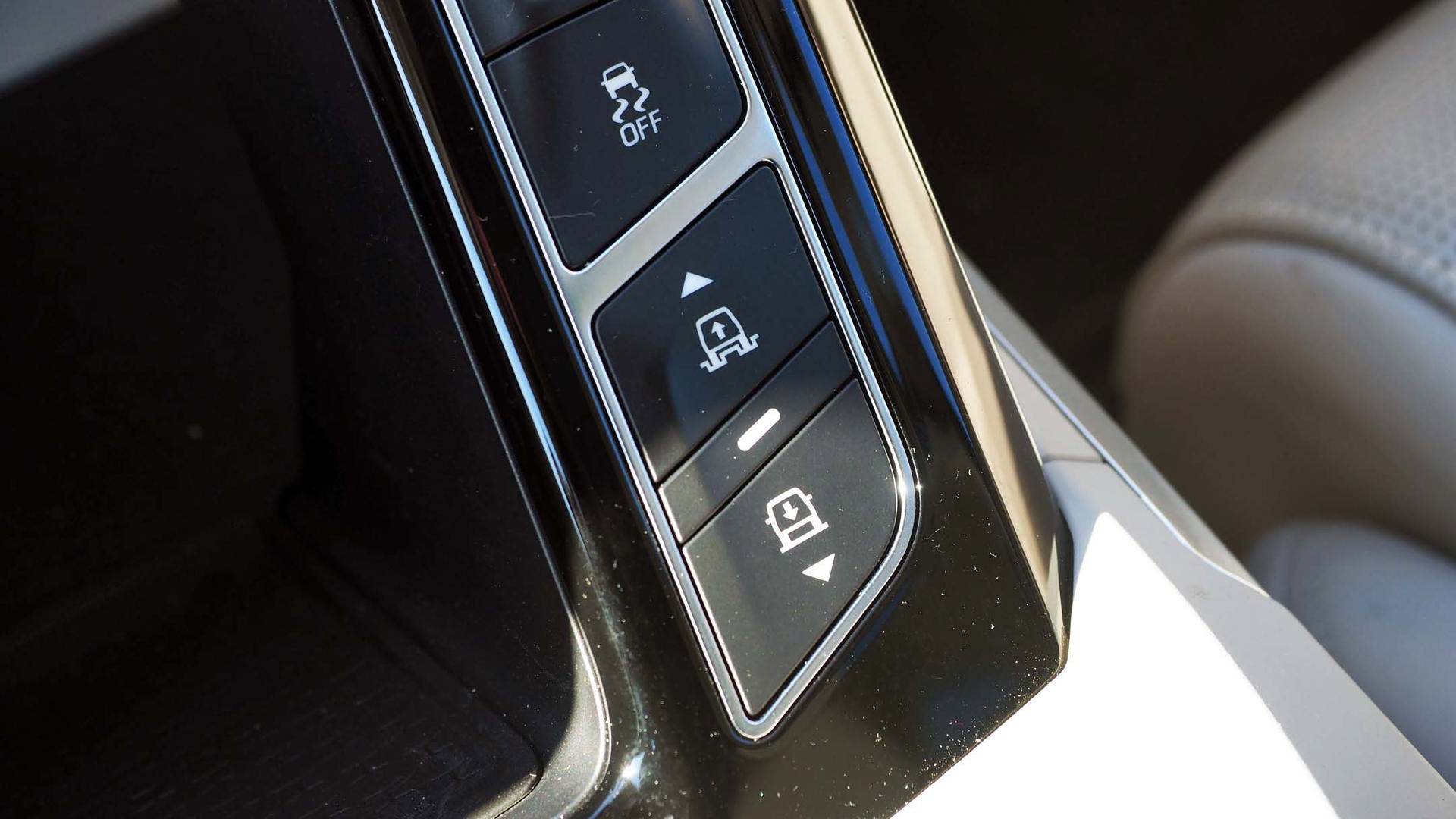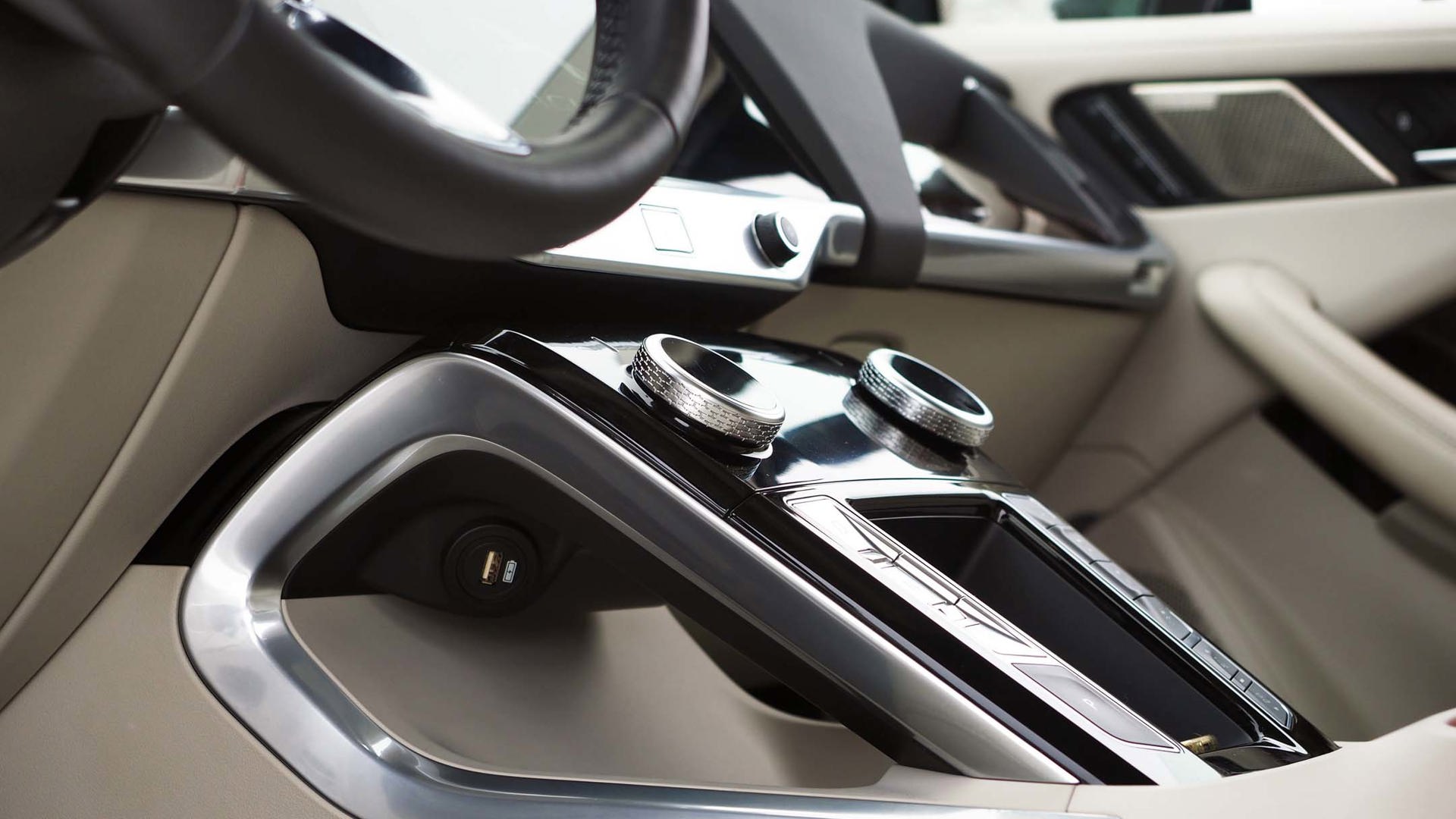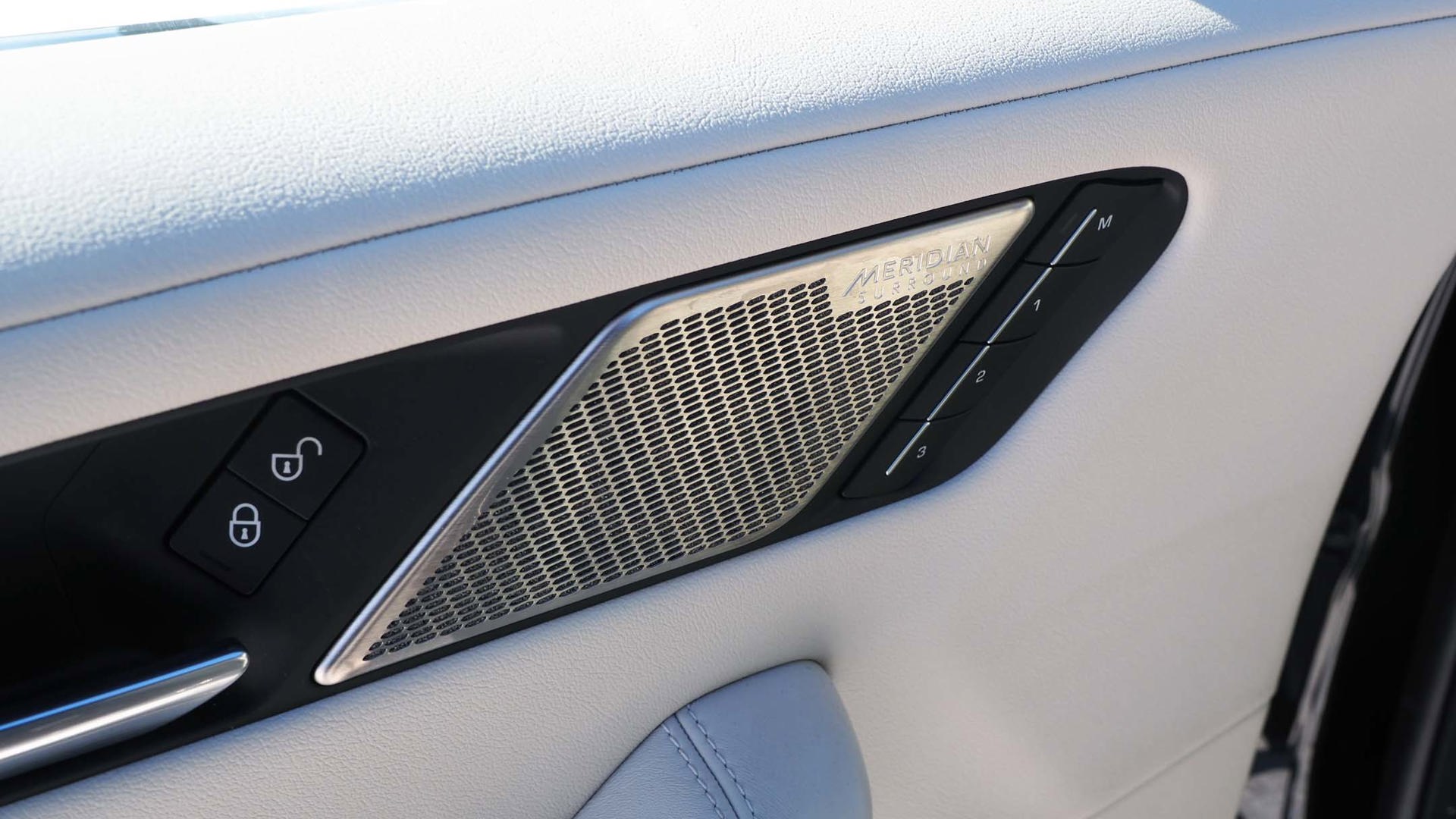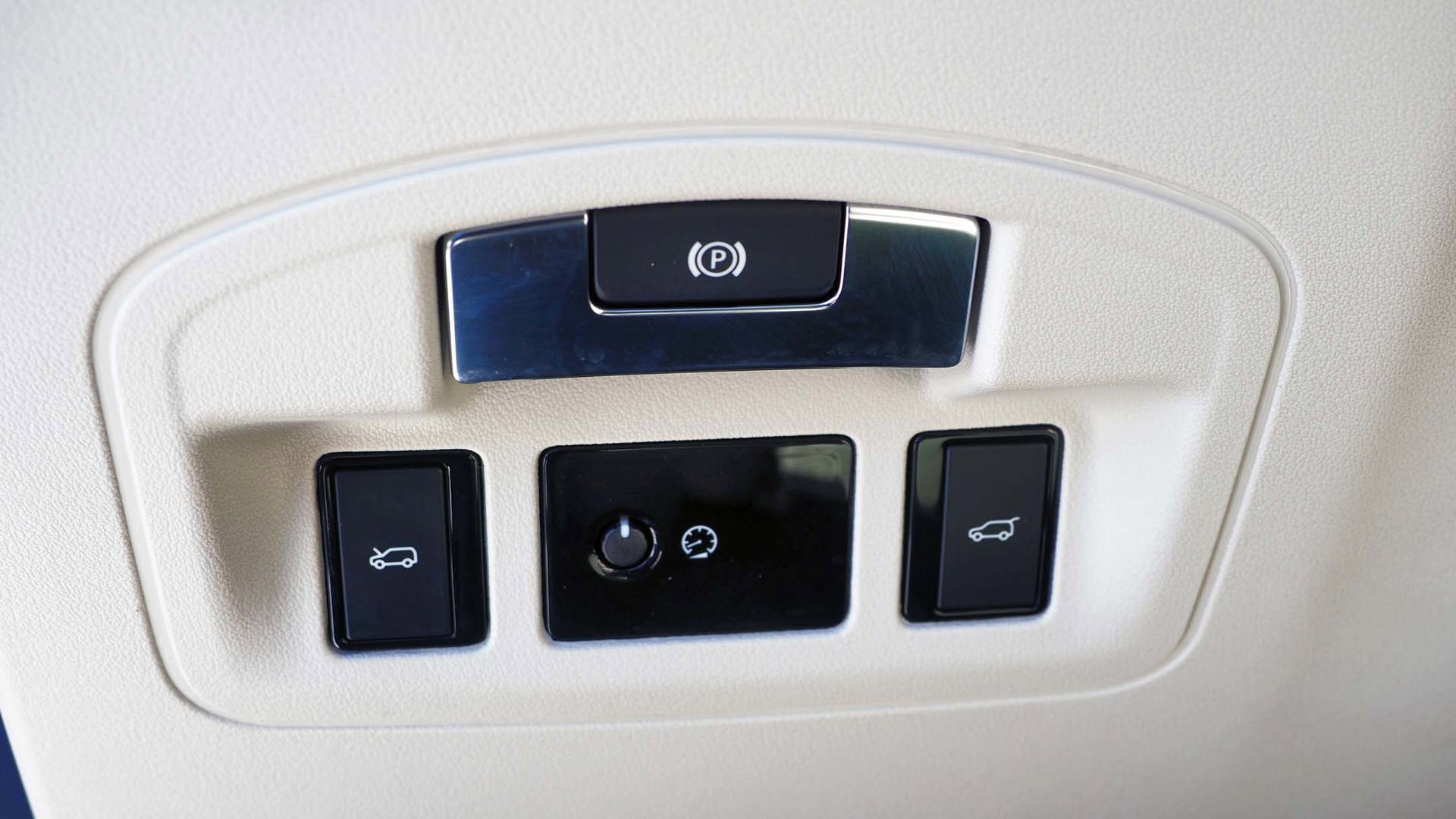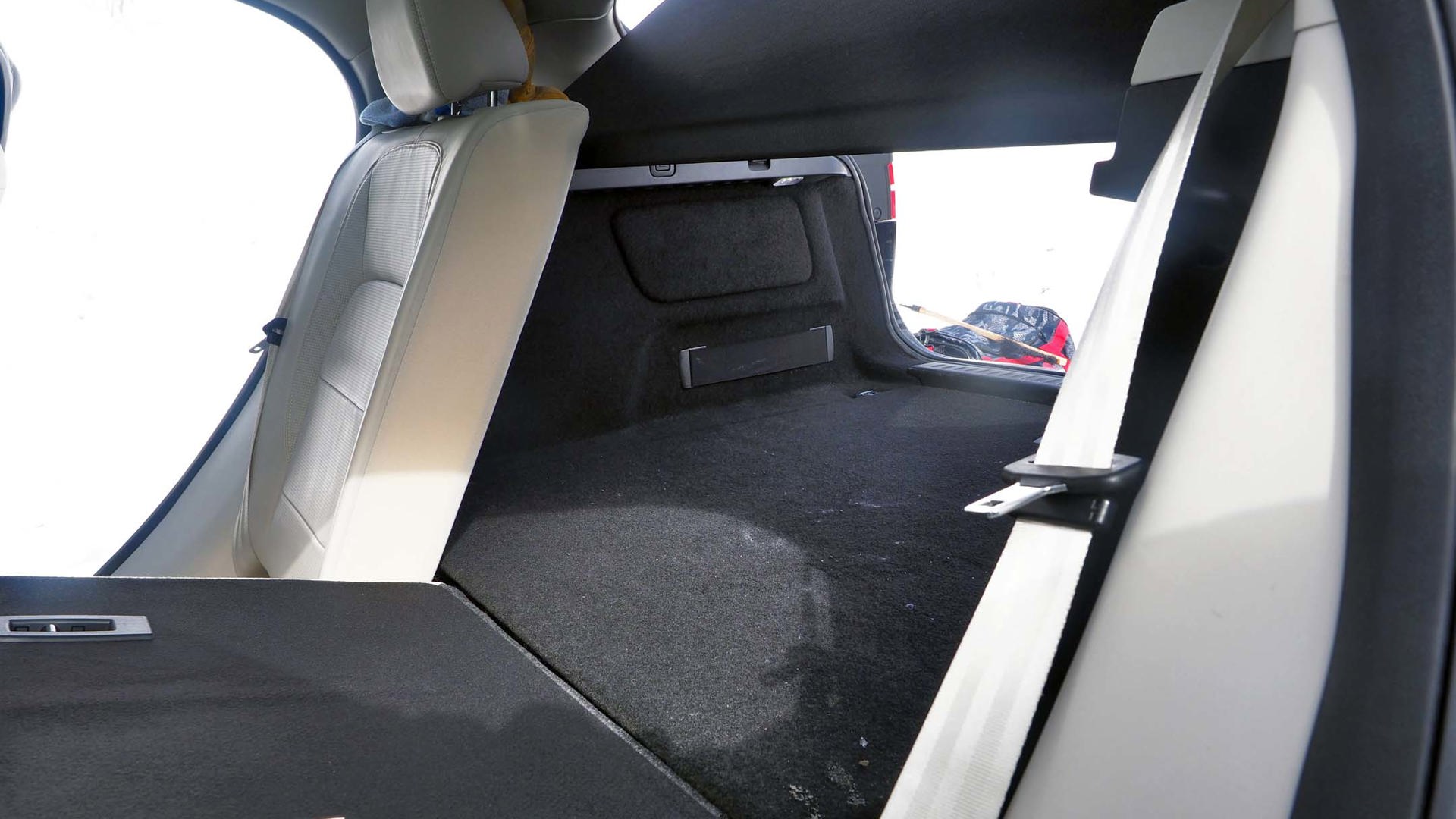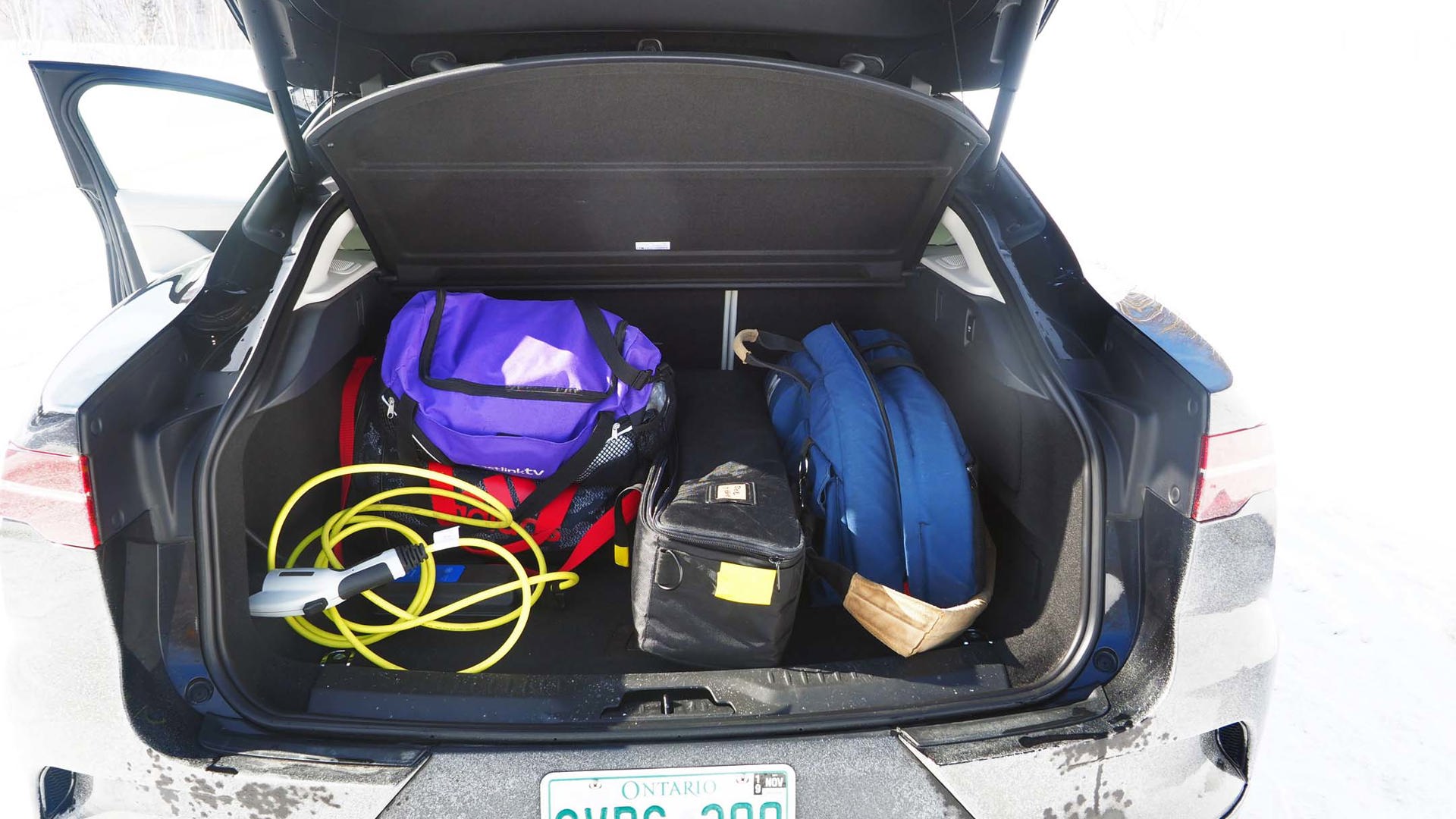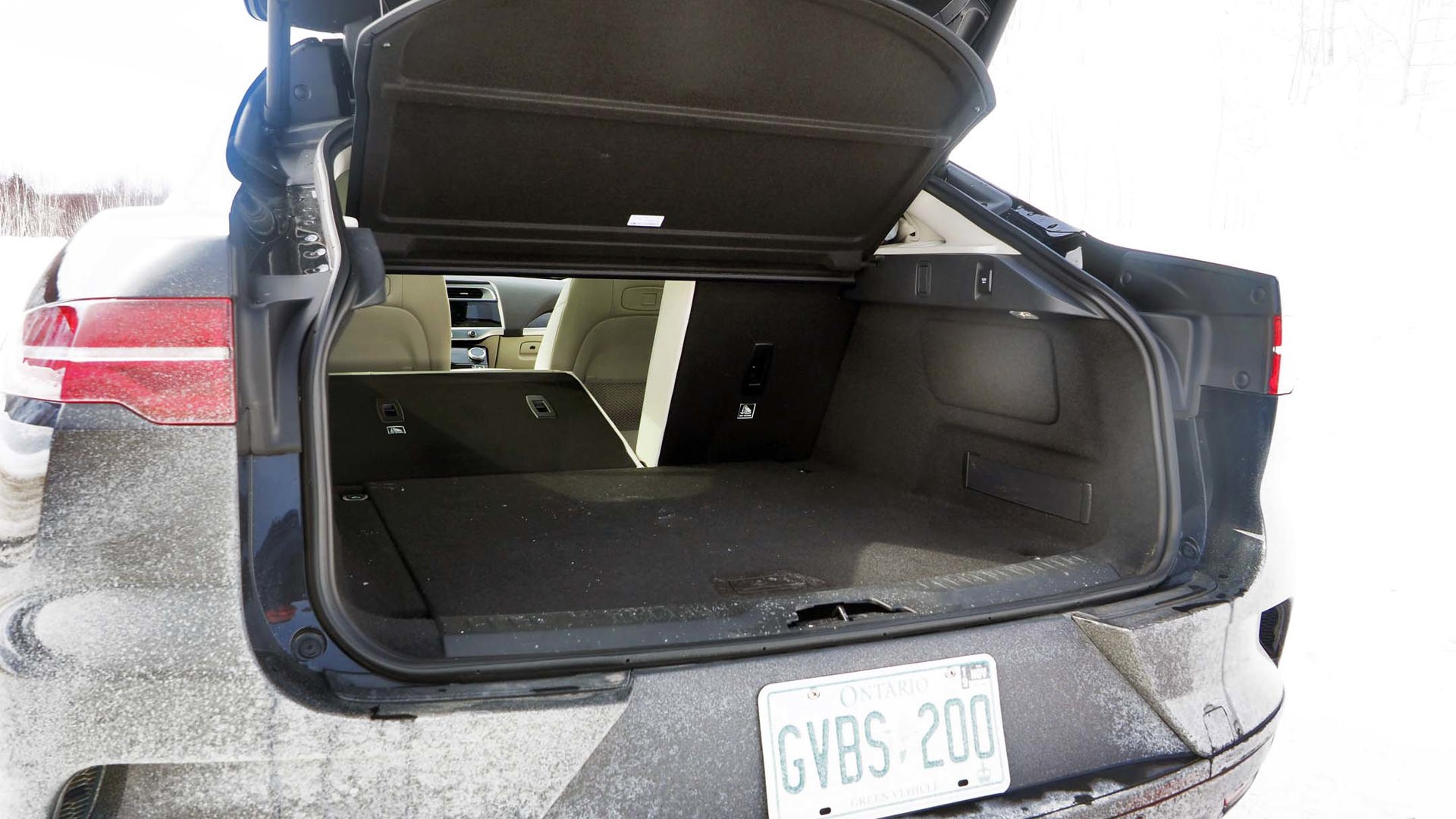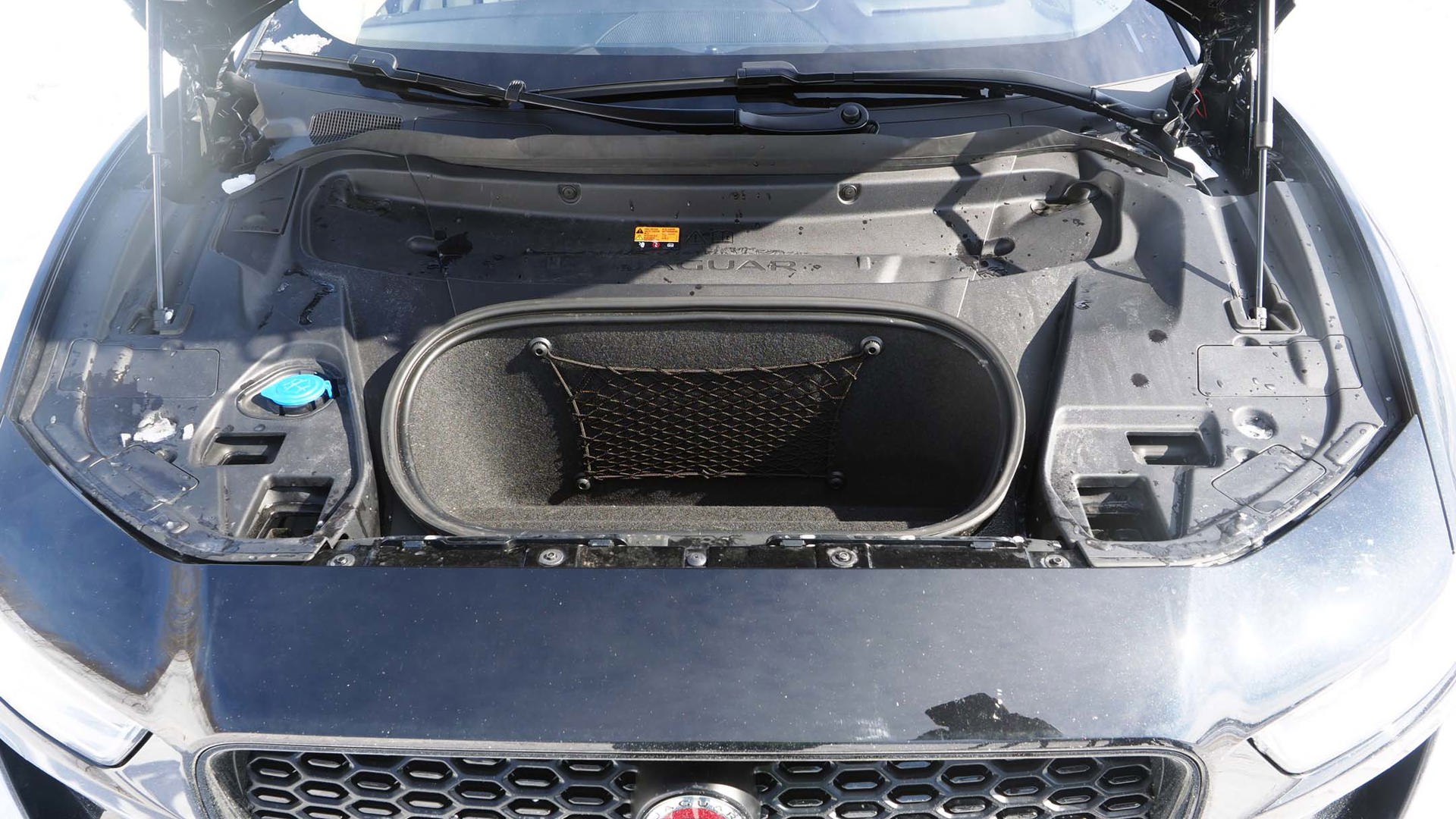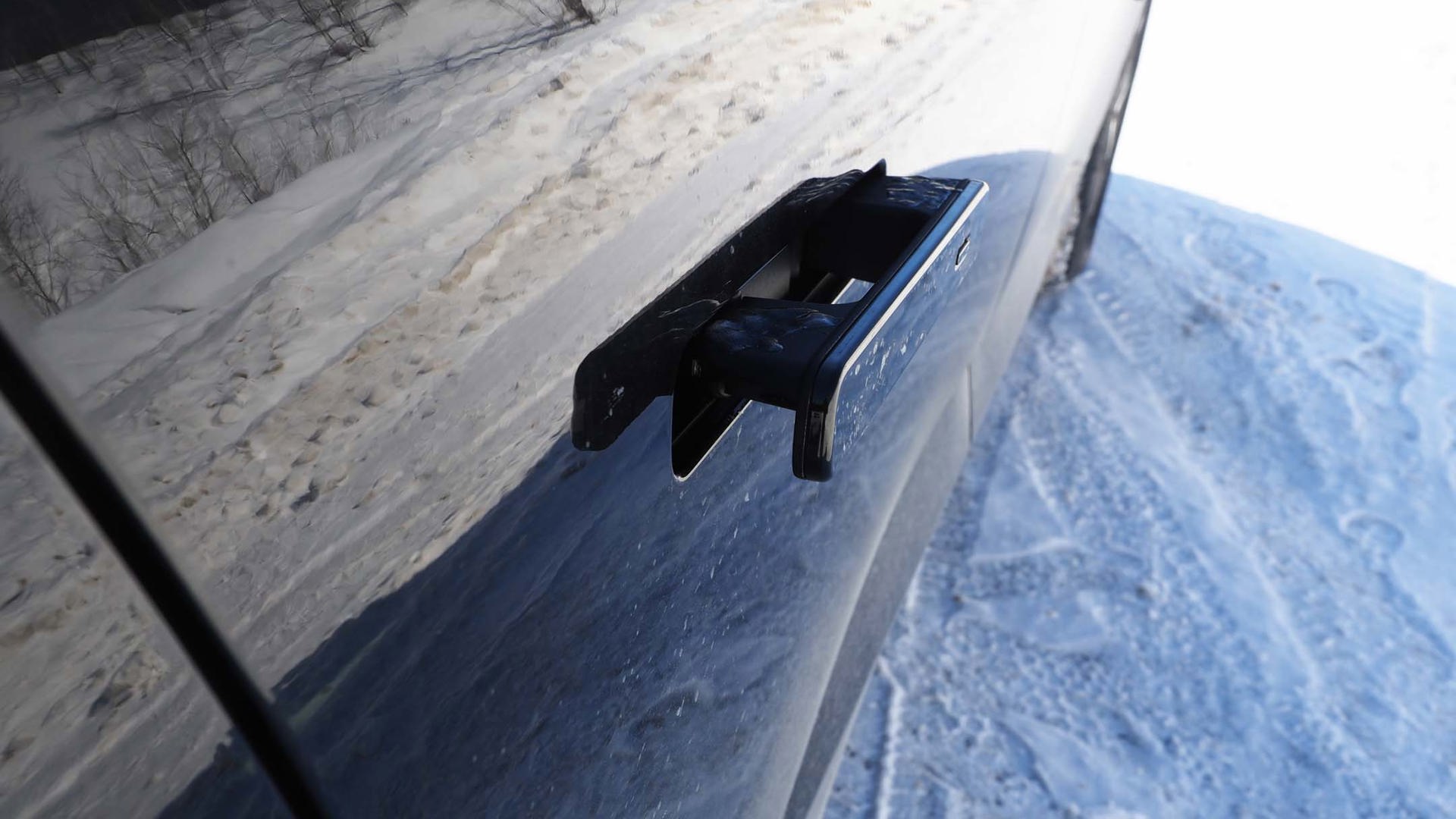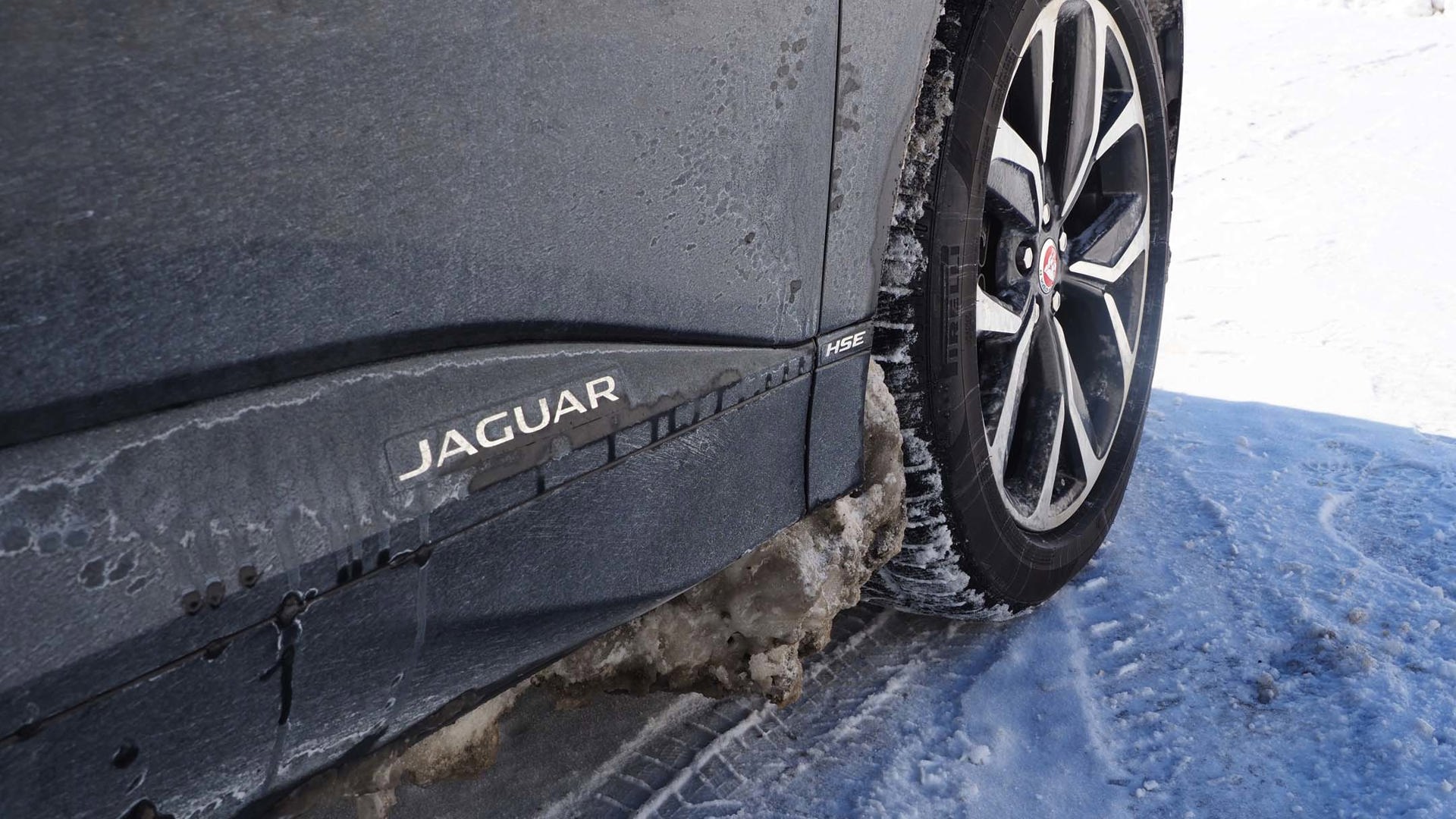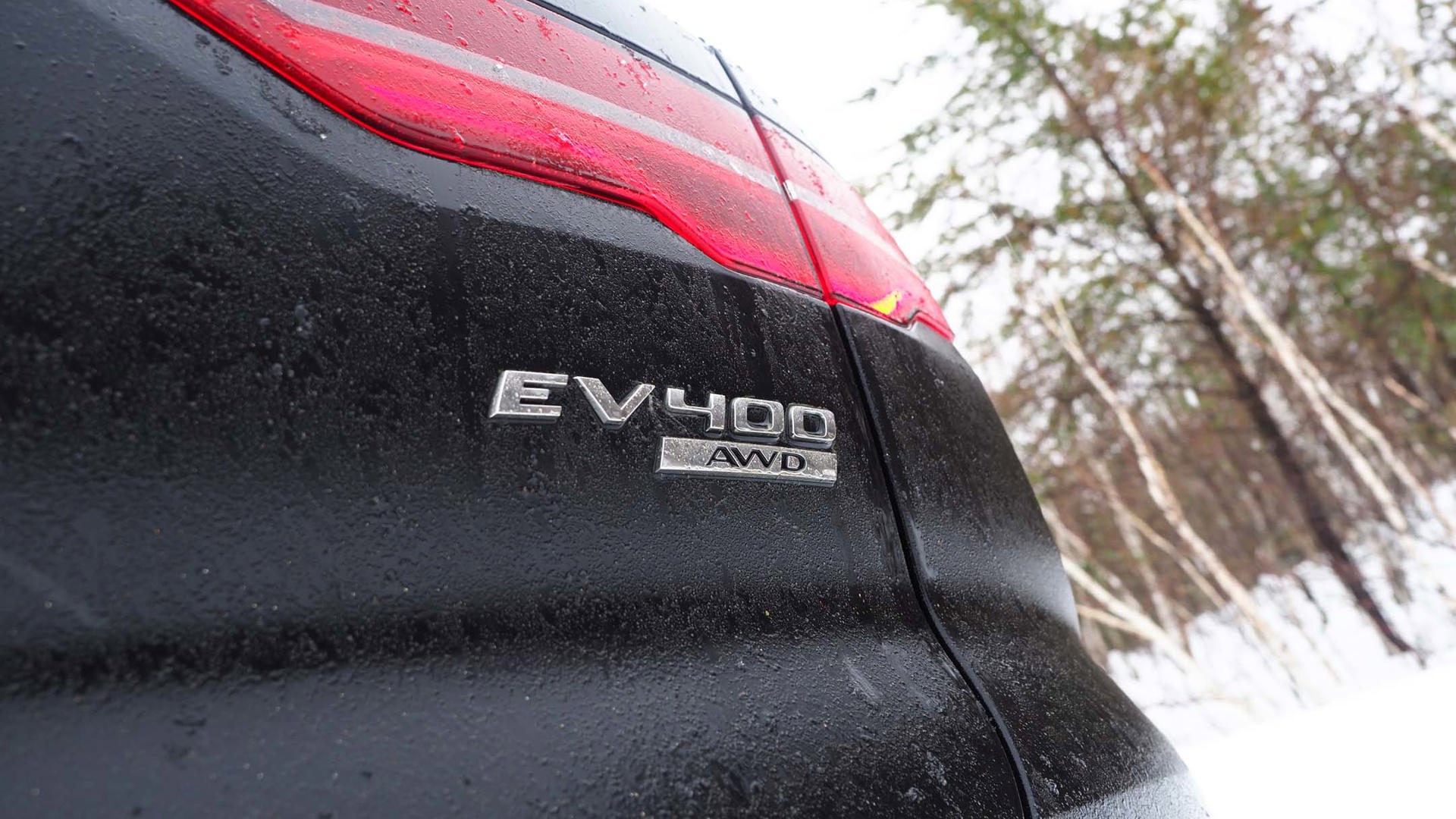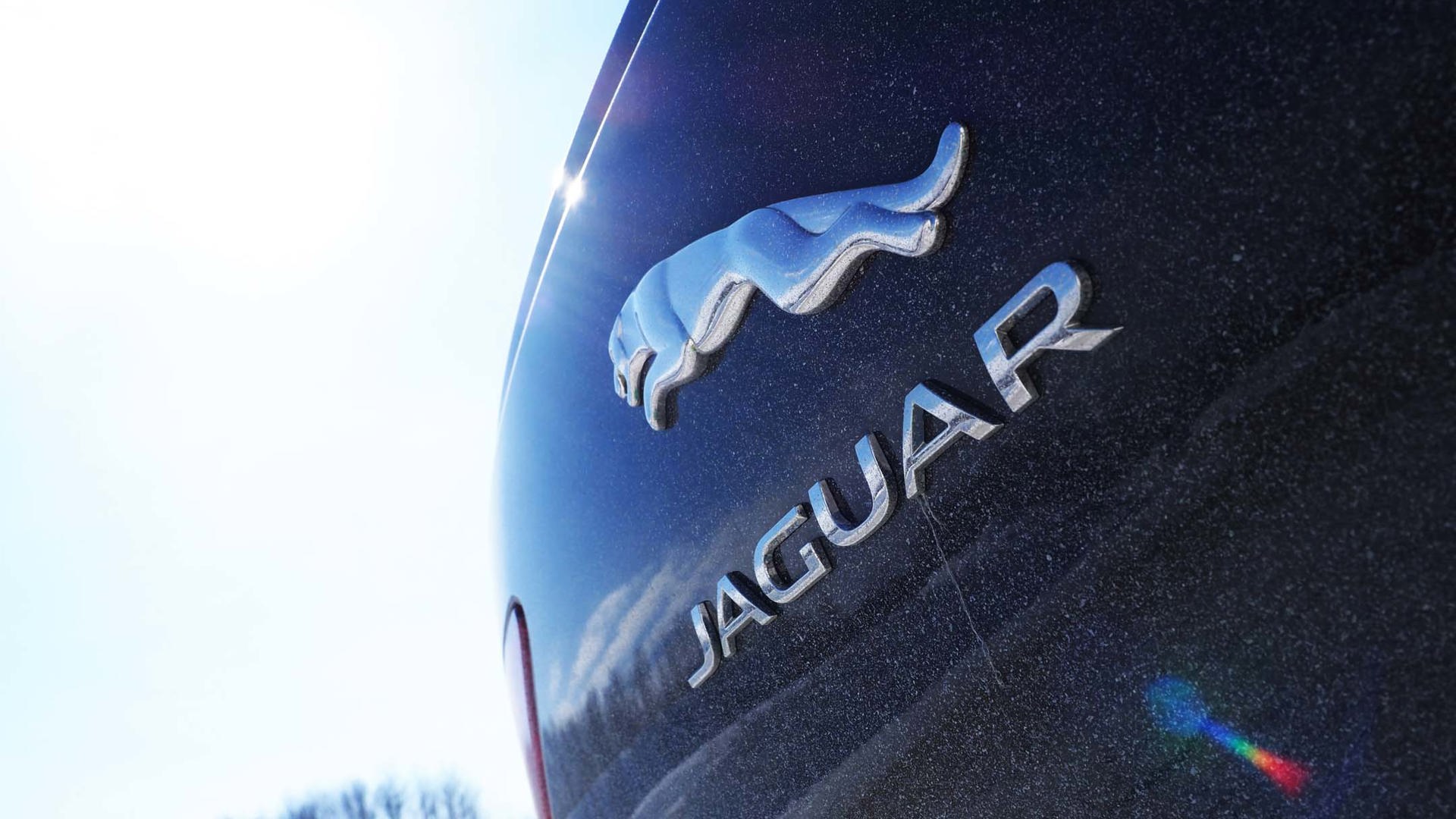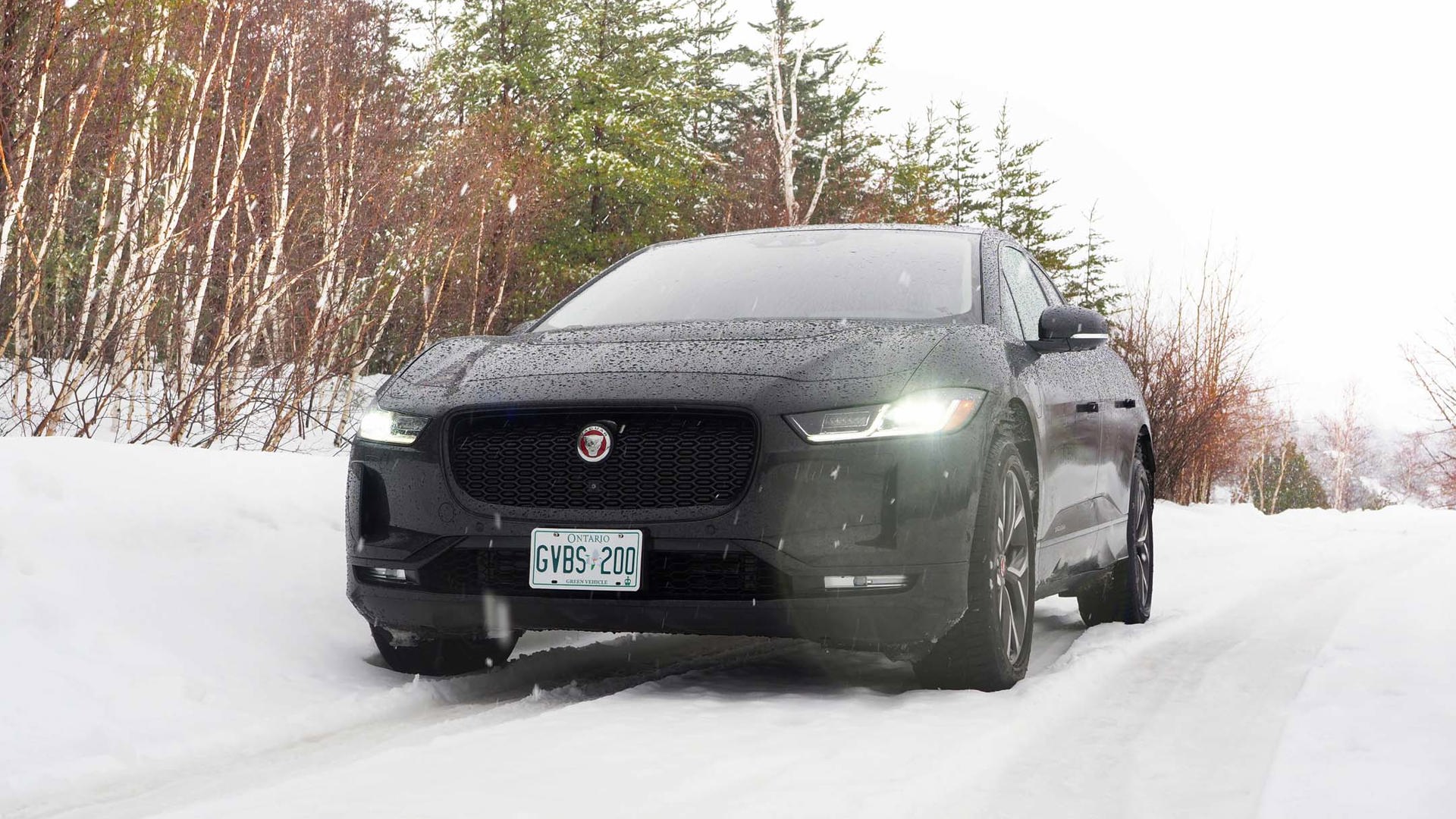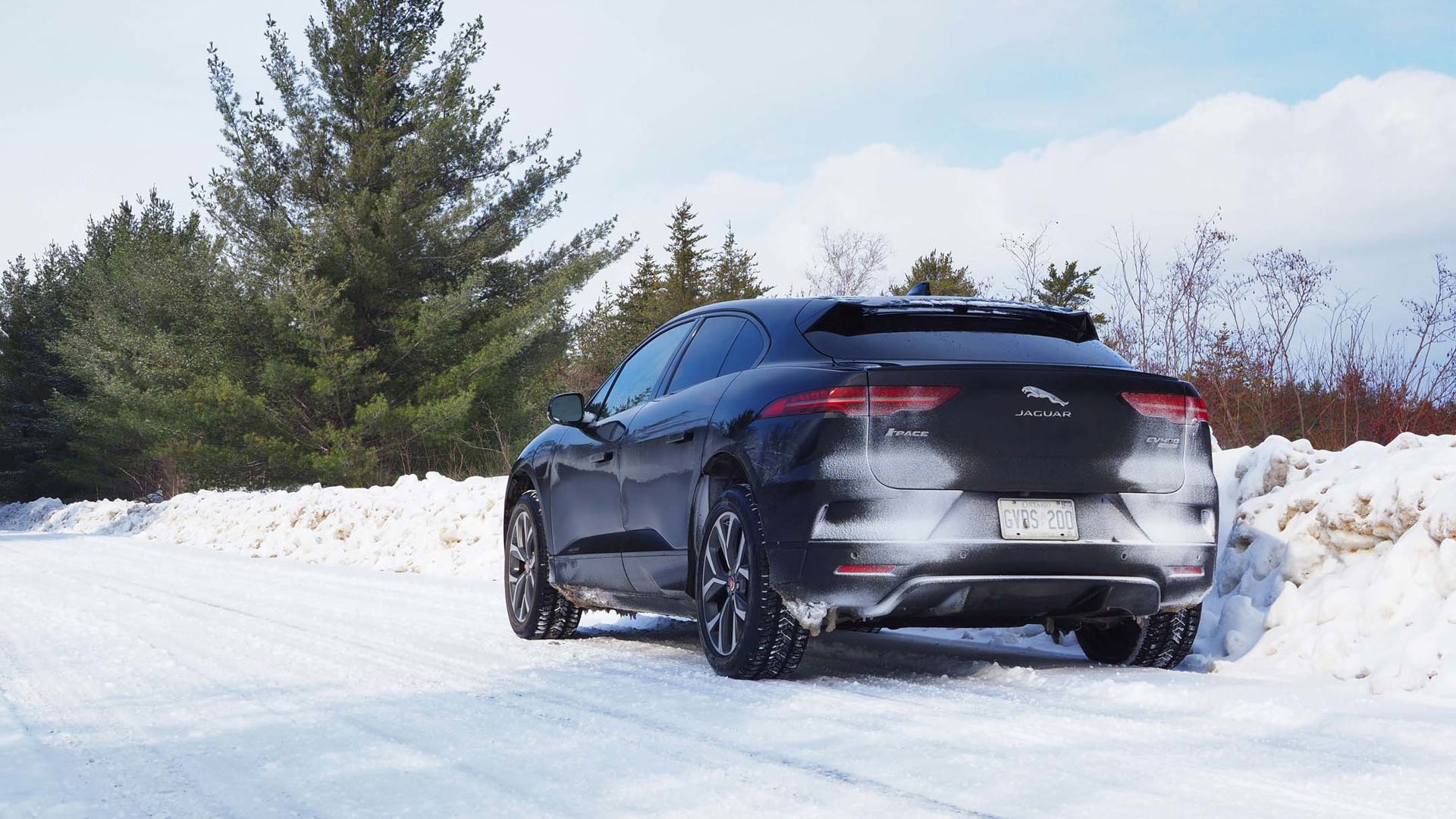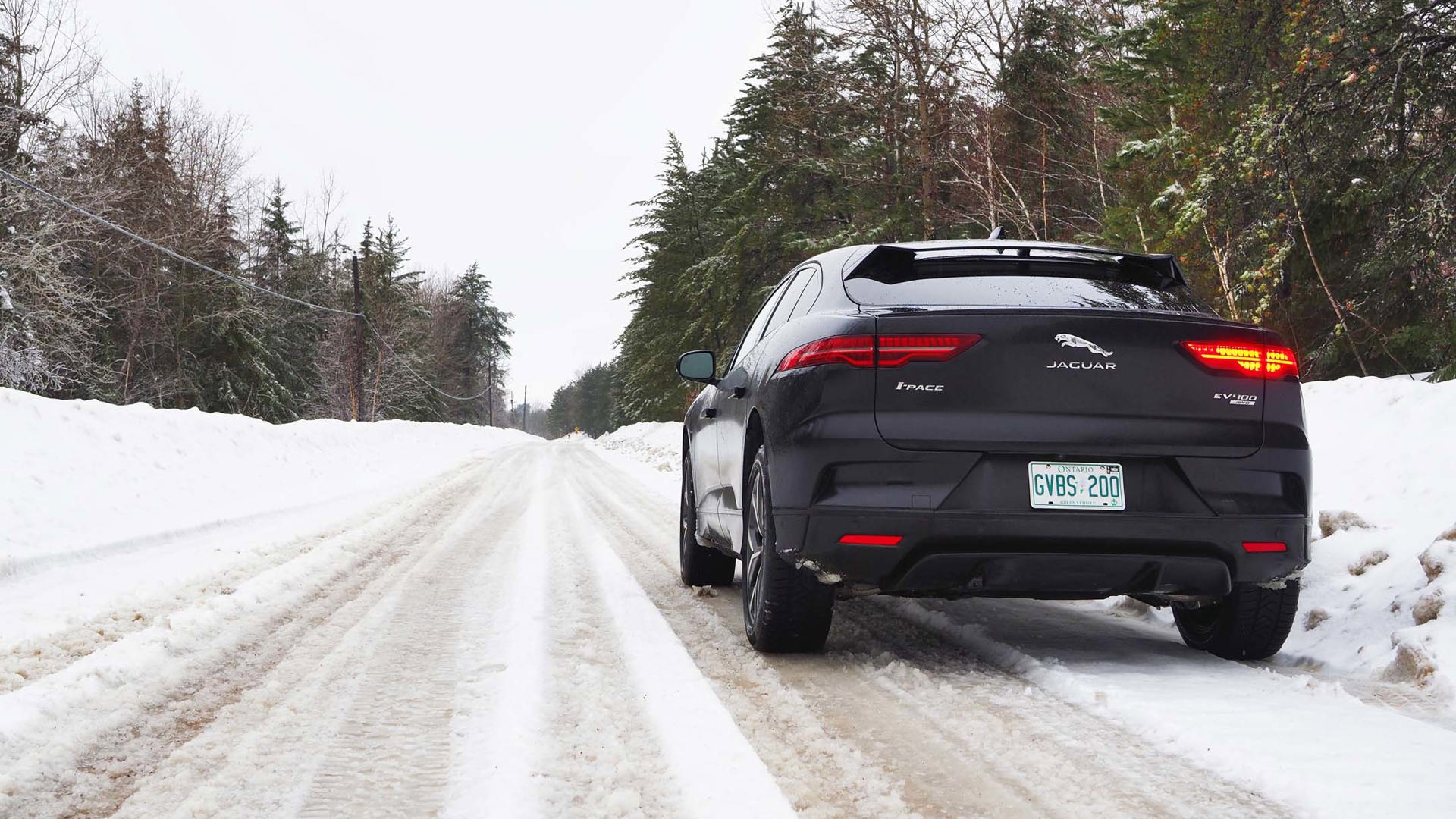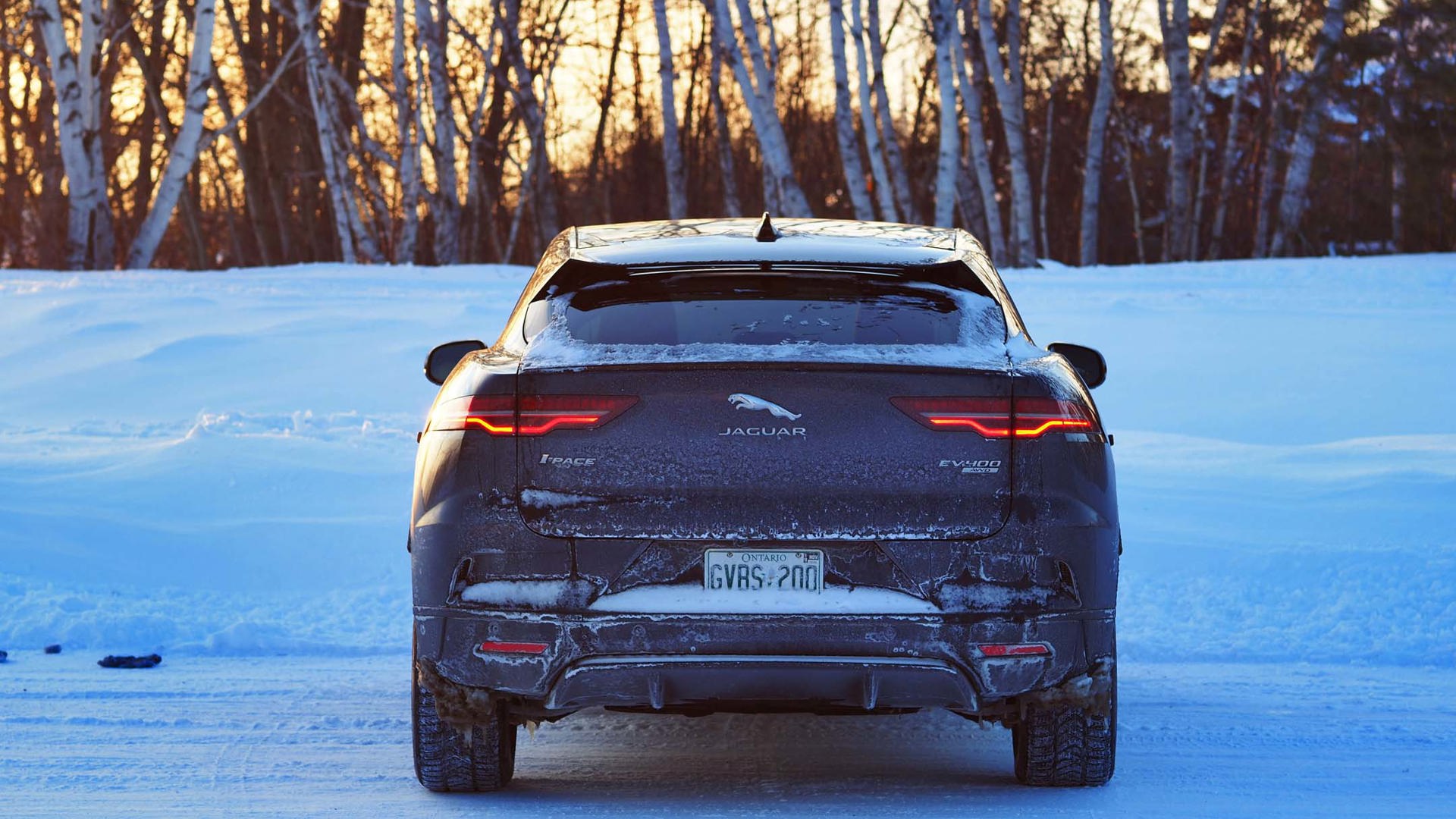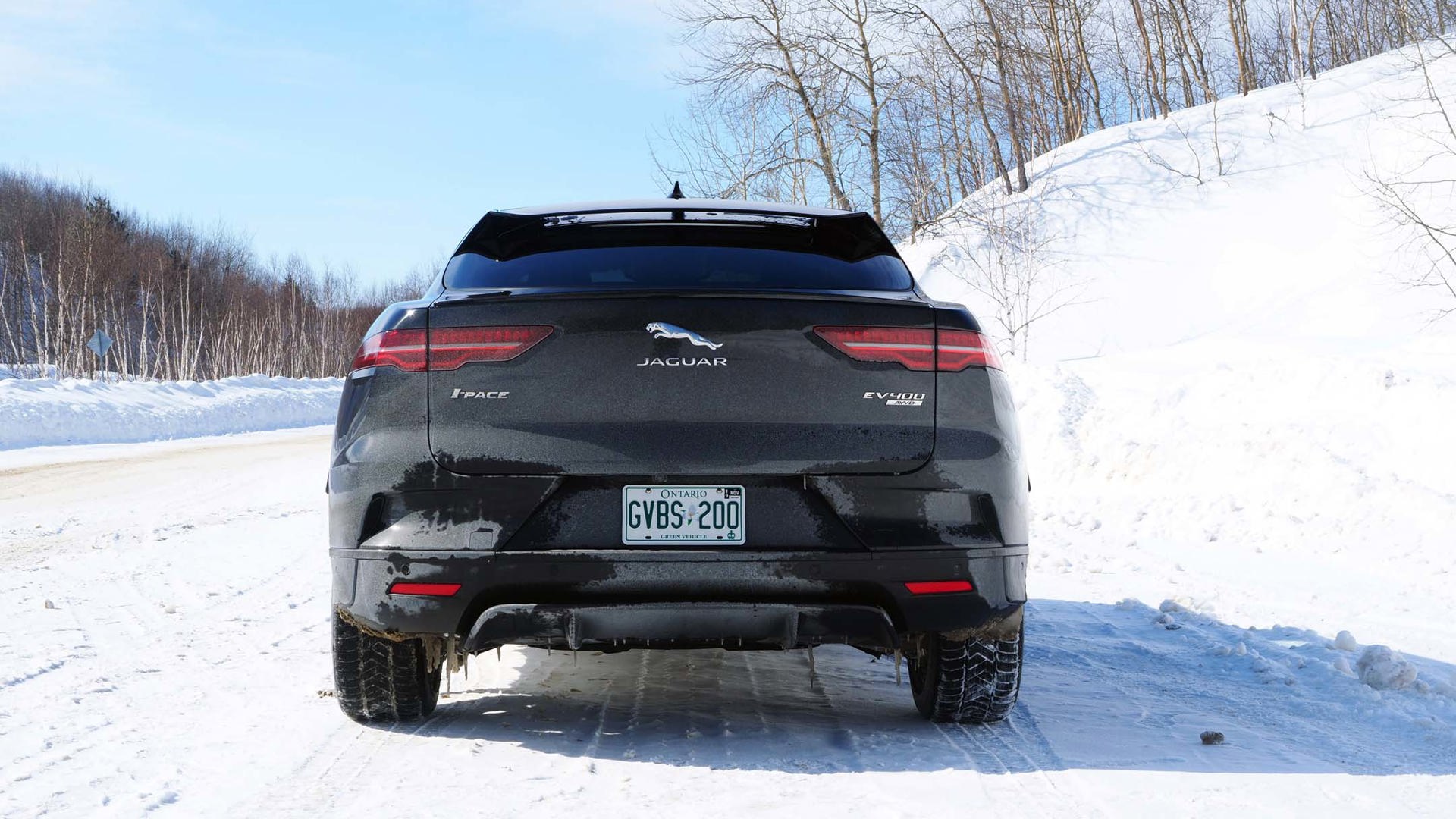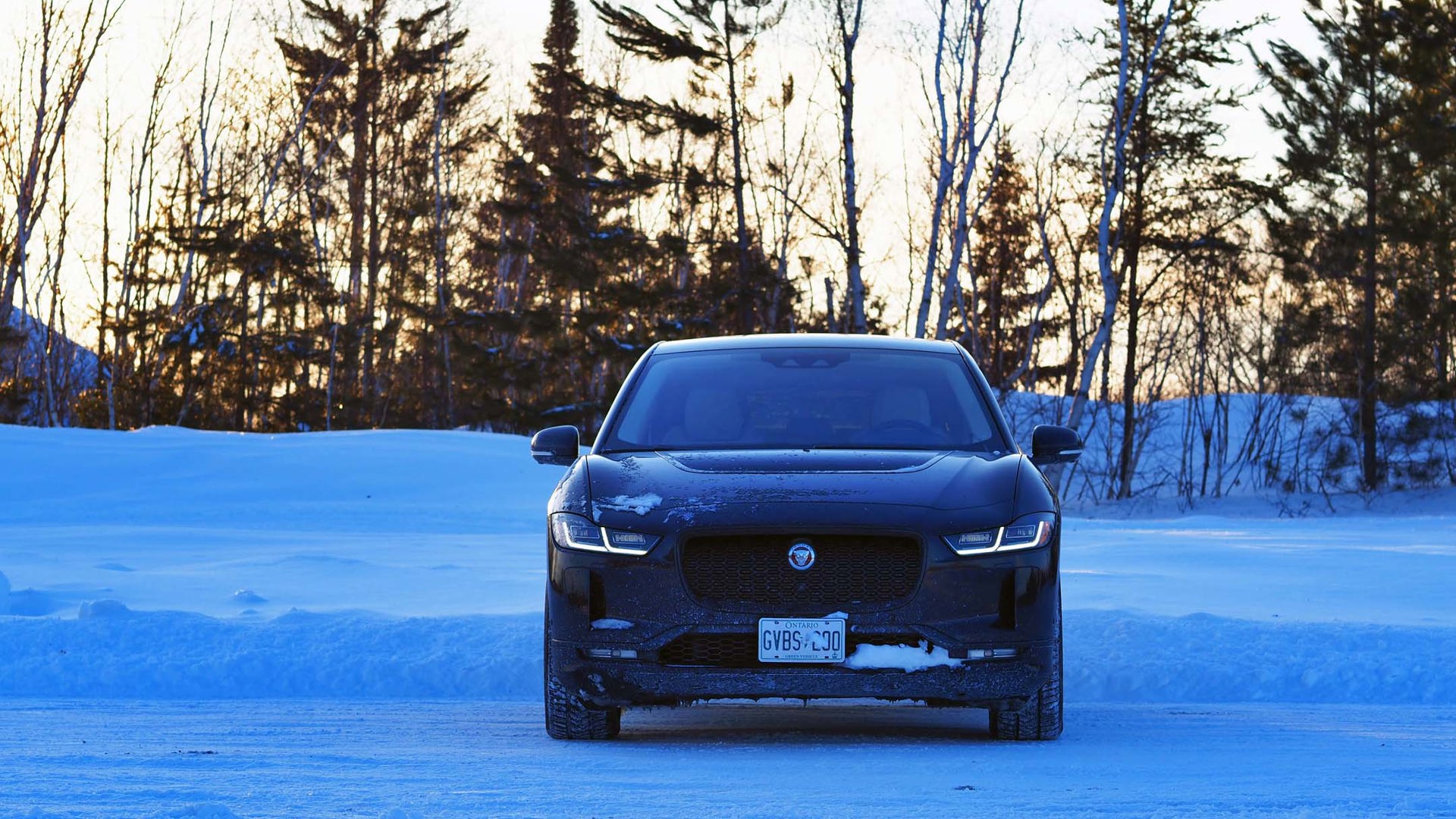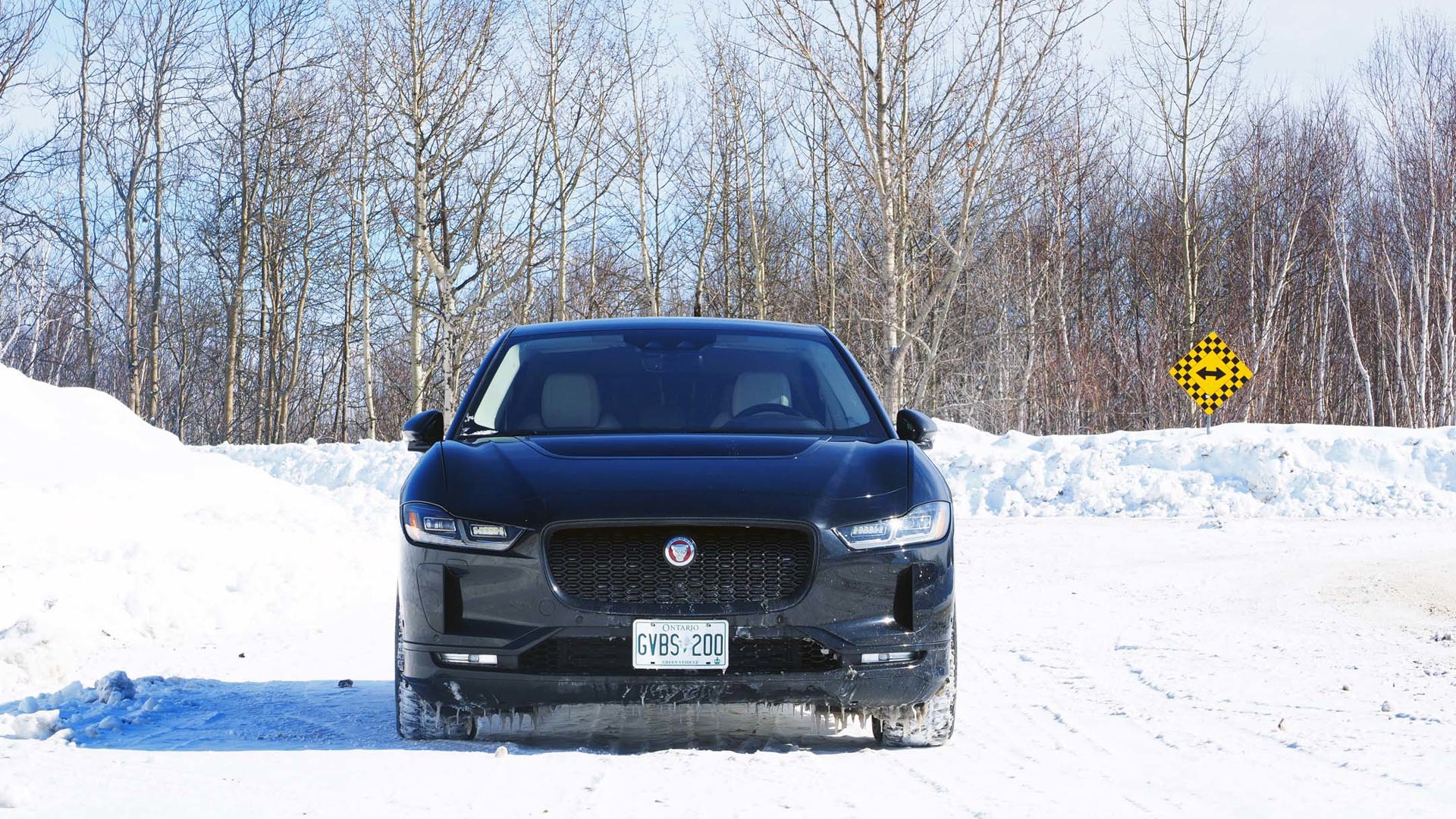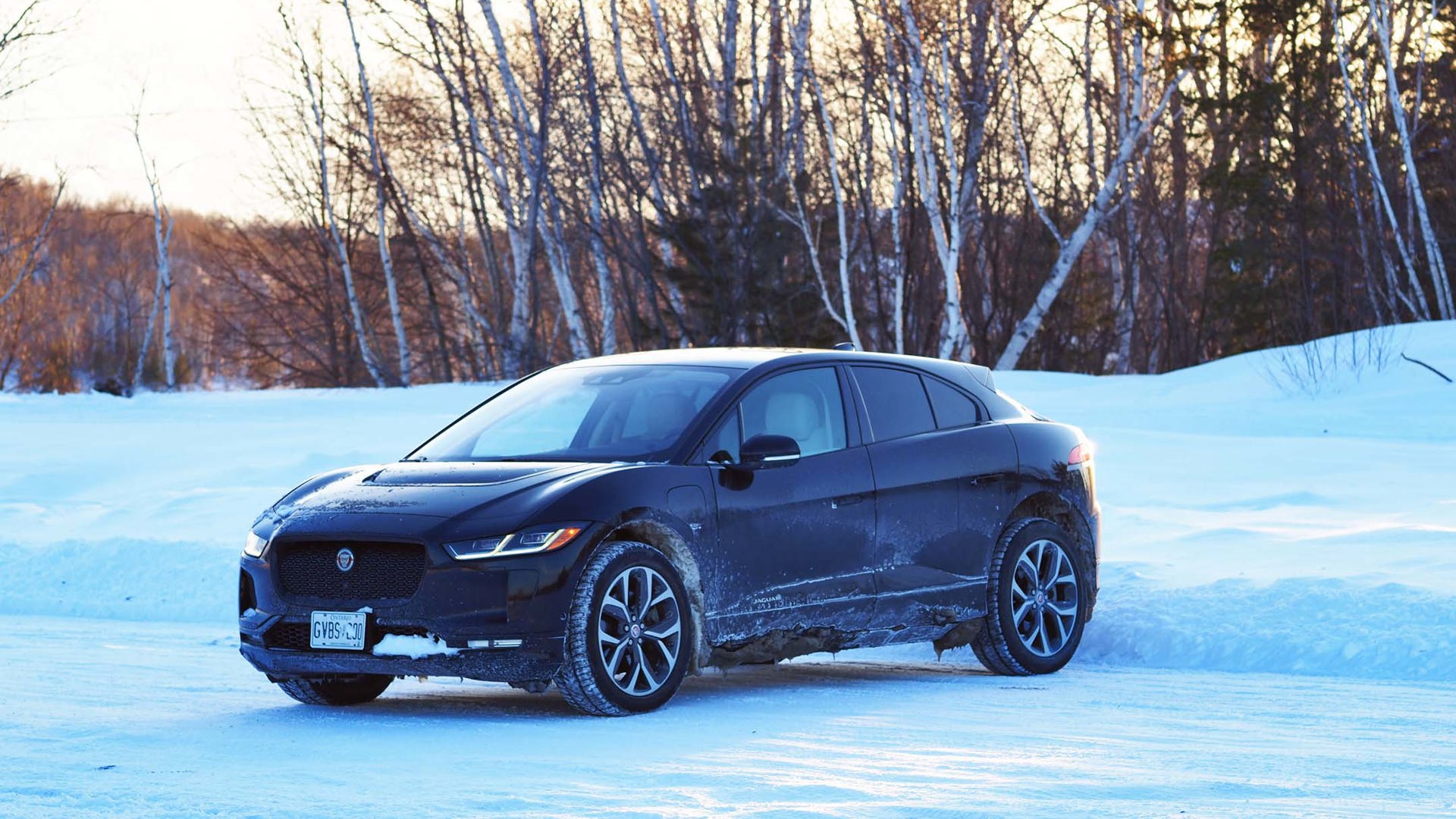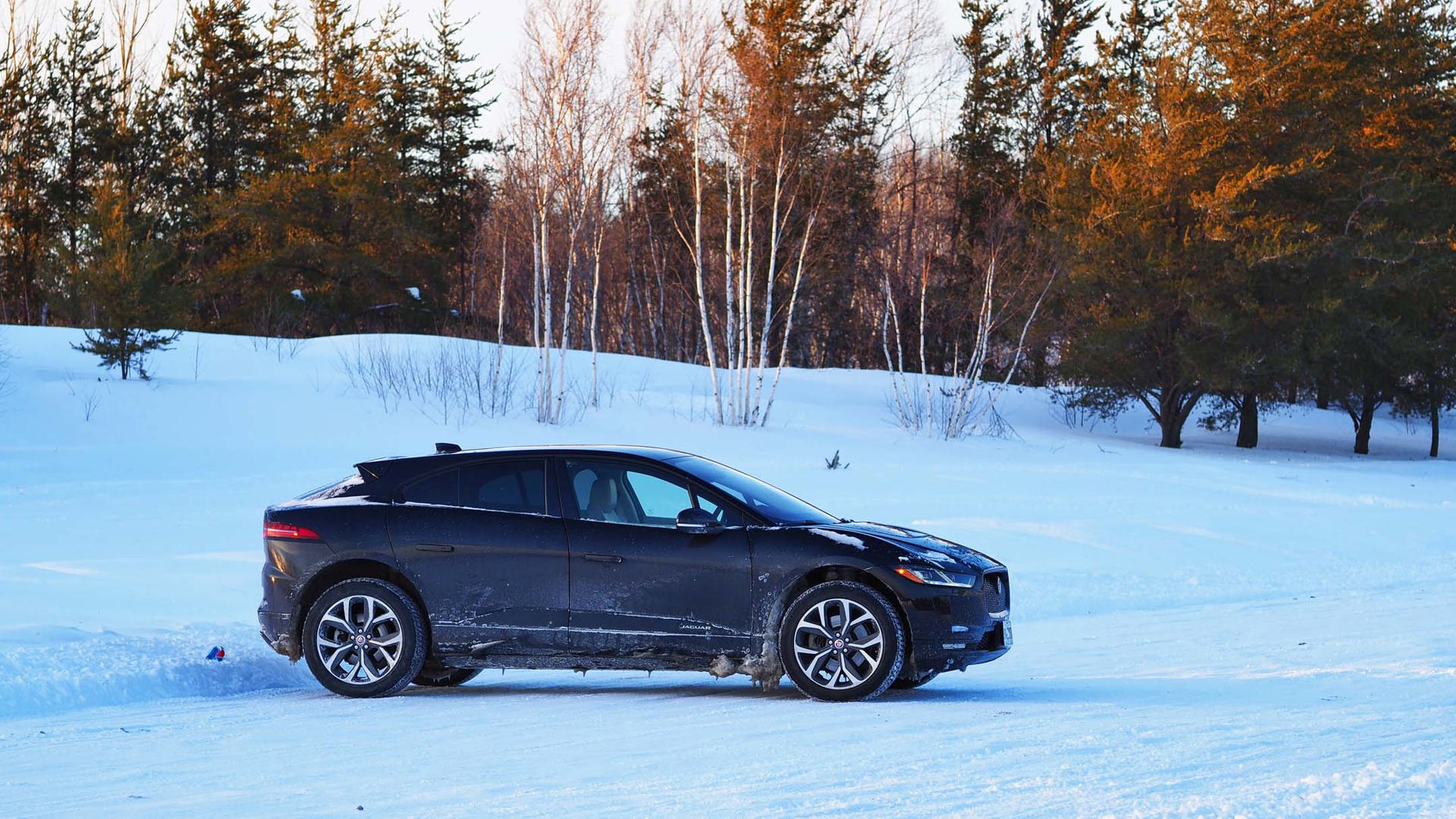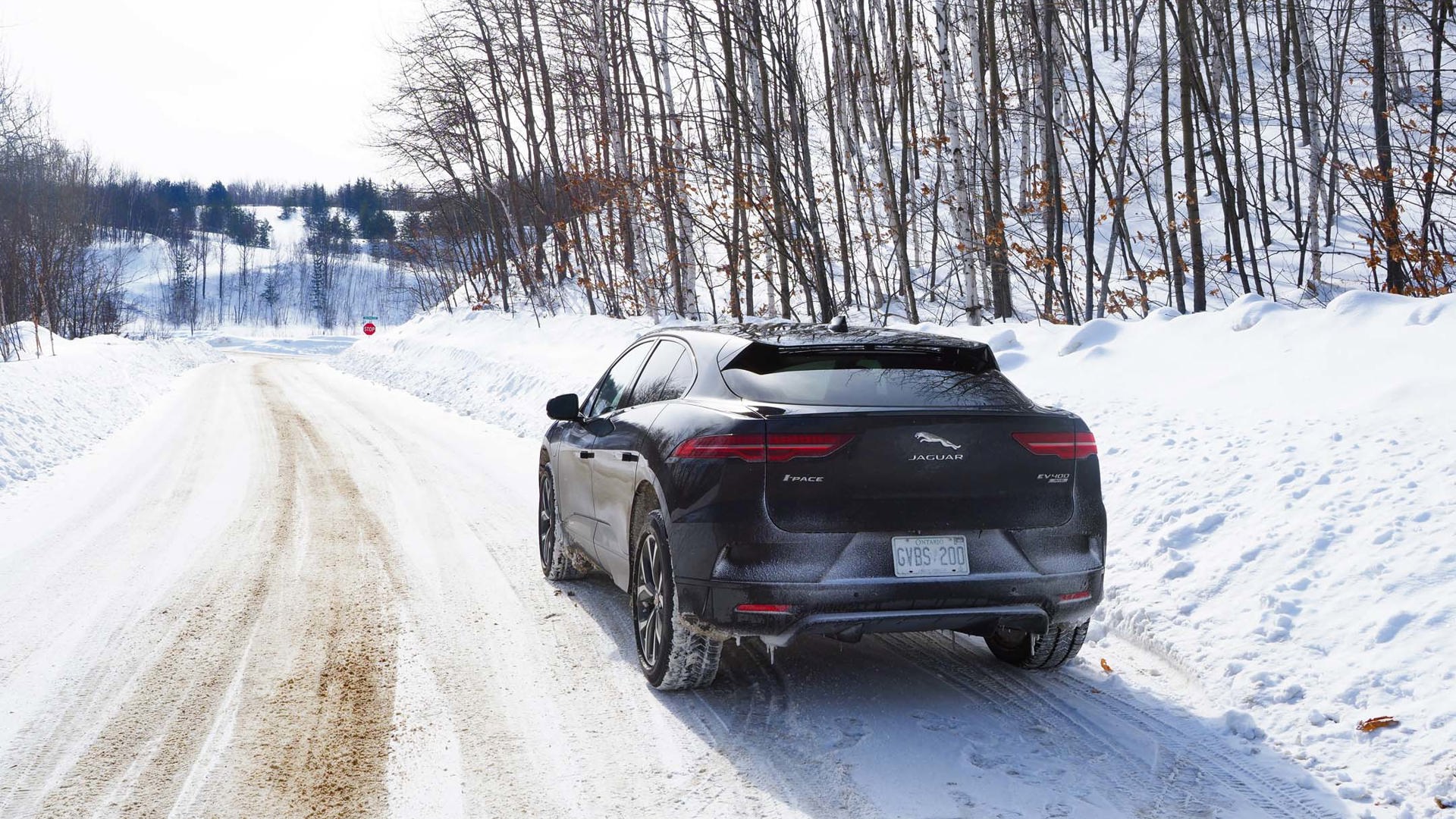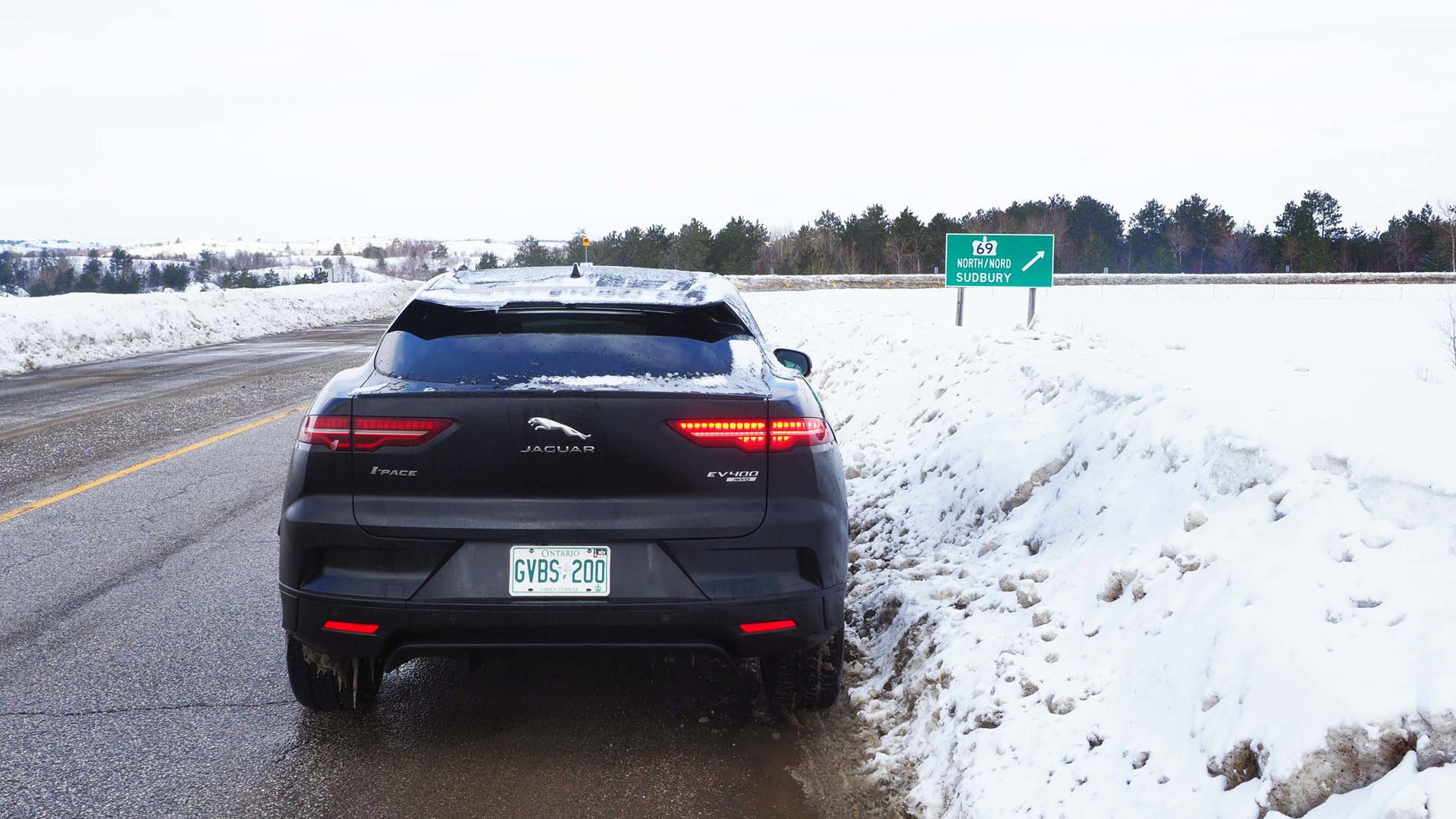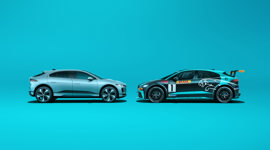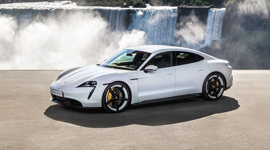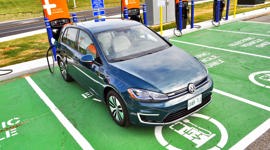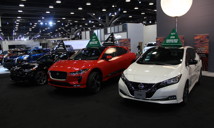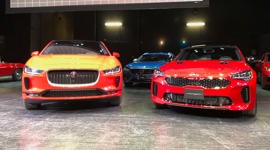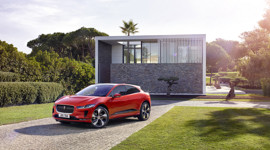Recently, I had the opportunity to spend two weeks driving Jaguar’s all-new, award-winning I-Pace EV in the middle of a Northern Ontario winter.
The lengthy test involved a pair of 400-plus kilometre highway road trips through parts of Ontario with very limited charging infrastructure – as well as plenty of around-town driving, often during and after heavy snowfall, and extreme cold.
If you’re considering a Jaguar I-Pace, or are interested in how an EV like it might work in the colder months, read on – but note that my observations relate to a test drive of one specific EV in one specific locale, and under one specific set of circumstances. Also, this trip was my first time ever driving a full EV.
Your results may vary.
I’ll share some highlights, thoughts and observations on the experience of using this EV in a wintertime climate, often in less-than-ideal conditions. My tester was wearing a set of 20-inch Pirelli Scorpion Winter Tires.
If you’re after even more information, my full review of the 2019 I-Pace is available here, and you’ll find some informative video content (including a full video review and wintertime road-trip ride-along video) over on our YouTube page.
Setting the Stage
My February test drive saw average daytime highs land around -13 degrees Celsius. Two half-day highway trips were made with the tester – both occurred at or below that temperature.
In my locale, getting from one destination to the next often requires a lengthy highway drive, and public charging infrastructure is patchy to nonexistent in my part of Northern Ontario. This is true along major highway routes that connect Sudbury to areas further south, and even more the case on routes that connect Sudbury to areas further North.
My highway-heavy test drive means the I-Pace’s range is reduced slightly, since highway cruising through my locale leaves little opportunity for regenerative braking, which can help extend the range.
Typically, I charged the I-Pace overnight via a Level 2 charger at my house.
The Cold, the Heater, the Batteries, and the Range
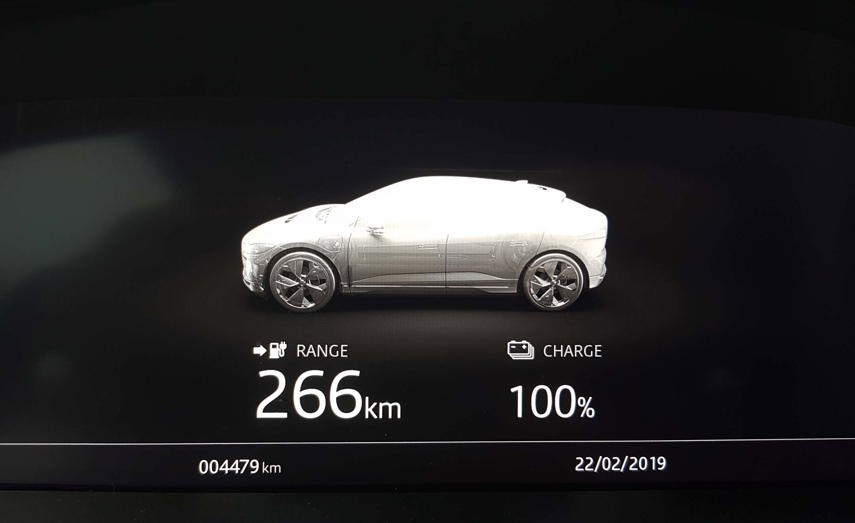
The 2019 Jaguar I-Pace has a 90 kWh battery embedded into its floor. The advertised range is 377 kilometres on a full charge – though that figure reflects use of the vehicle in perfect conditions. That range figure drops off when it’s cold outside, and drops further still if drivers turn on the heat.
On my test drive, the tester predicted a range of 300 kilometres on a full charge, at temperatures between about zero degrees and -12 degrees. In the most extreme cold (around 25 below), the full-battery range came in as low as 280 kilometres.
Use of the climate control (set to a cabin temperature of 20 degrees Celsius in the “Auto” setting), saw my range fall another 25–40 kilometres, depending on the outside temperature.
The gist? On a fully-charged battery with temperatures as low as about -20, and the climate control operating continually at my normal preferences, I was clear for 220–250 kilometres of driving per charge.
Bundling up and avoiding use of the heater sees that figure climb towards the 300 mark. On the warmest day of my test drive (0 degrees), and with no use of climate control, the test battery range peaked at 303 kilometres.
Climate Control, and the Importance of Preconditioning
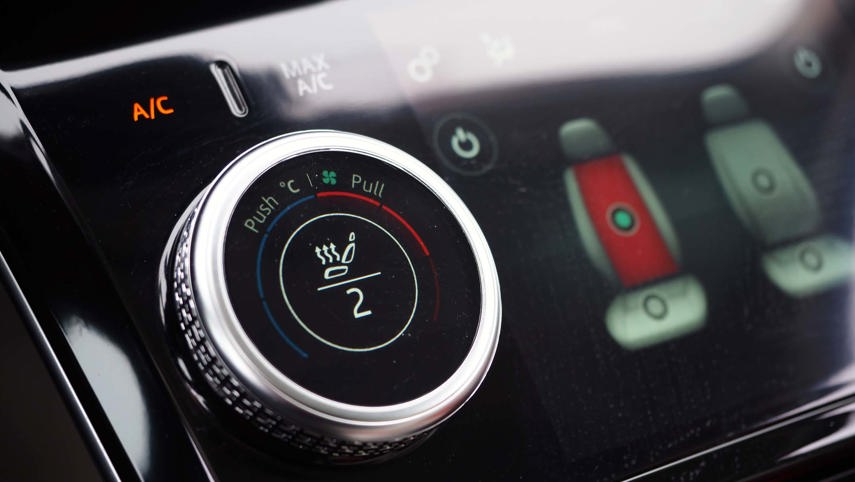
When you use the I-Pace’s heater, the cabin warms at about the same rate as a regular car. On very cold days, it can take a moment or two longer than you’d expect from a gas-powered vehicle.
The I-Pace’s windscreen has embedded heating elements that quickly clear away light frost, without the need to run the climate control fan.
This electrically heated windshield is a freebie – it doesn’t use enough power to reduce the remaining range calculation when you turn it on.
The heated seats are the same: they’re not the most powerful heated seats, but they can provide some welcome warmth on a chilly drive, and without a penalty to the remaining range.
Within about 2 seconds of turning on the climate control system, the remaining range figure updates itself. Even small changes to fan speed and selected temperature can have an instant impact, which tends to get larger the colder it is outside. As such, drivers can conserve range by only using as much heat as they absolutely need. On bright days, the sun helps keep the cabin warm.
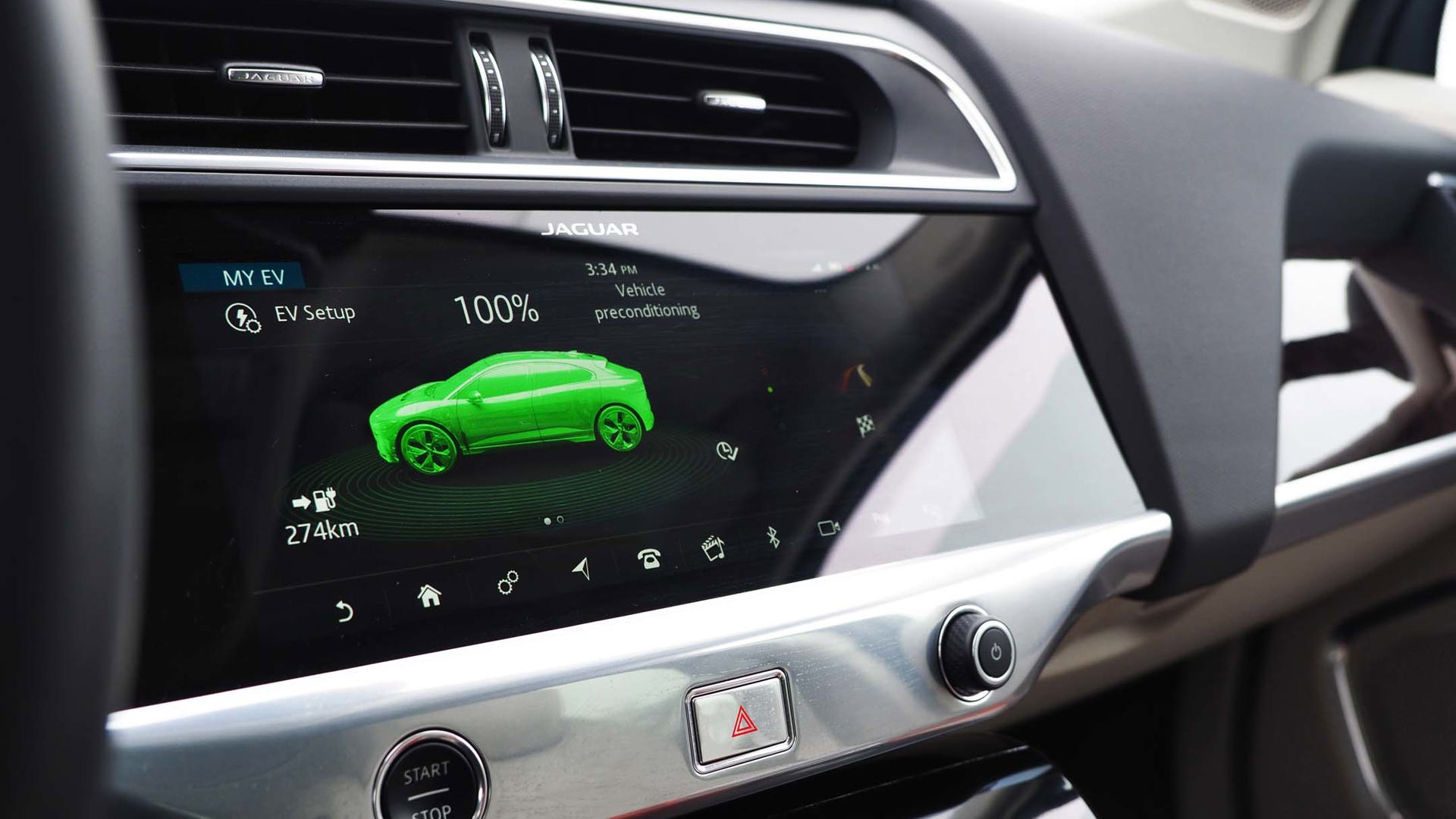
Drivers can set the I-Pace to “precondition” the cabin for their next departure. Simply set the desired departure time via the central screen, set the climate control how you like, turn the vehicle off, and plug it in to charge.
I go to the gym every morning at 8am, and day upon leaving, I arrived to a toasty-warm (and fully defrosted) I-Pace, and a fully-charged battery.
Preconditioning preserves battery range, and ahead of a longer trip on a cold day, its use means drivers can avoid switching on the climate control on as early as they otherwise might. This can help extend driving range.
When winter-driving range may become an issue, drivers will quickly learn to precondition the cabin to sauna-like temperatures before departure, and to use the climate control system as sparingly as possible thereafter. Bundling up is key as well.
If you’ll go for a full-range, heat-off drive in the cold, bundle your feet up adequately. Hanging out beneath the dashboard, the sun can’t help keep them warm.
Electric AWD vs Winter
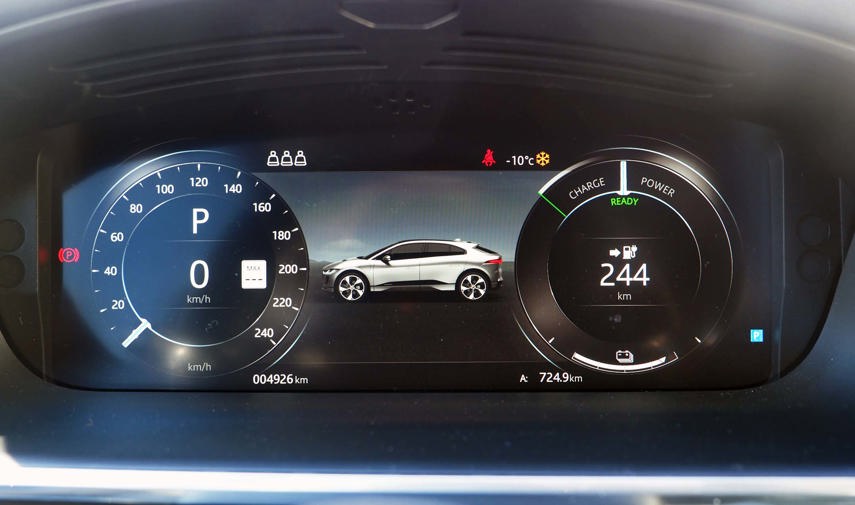
As a gadget geek and aspiring videographer, I enjoy shooting extreme slow-motion footage of AWD-equipped vehicles launching away from the camera, spinning their wheels in the snow. I also enjoy watching said footage to see how each AWD system reacts. (Head here to see that footage in the review video.)
What you feel from the I-Pace’s driver seat is backed up by what you’d see in the footage: this system acts very quickly, is very precise, and never misses a beat. It performs as well, or better than, any AWD system I’ve ever used in the snow.
Without the constraints of clutches, gears, fluids, shafts and differentials, the I-Pace’s AWD system is smoother, faster, more effective and more flexible than the norm. Also, its uniquely superb at sorting out even challenging traction situations with total invisibility to the driver.
With proper winter tires mounted, even those coming to the I-Pace out of something with Quattro, SH-AWD, xDrive, or 4Matic will be pleasantly surprised.
My Favourite Way to Use the I-Pace in Winter?
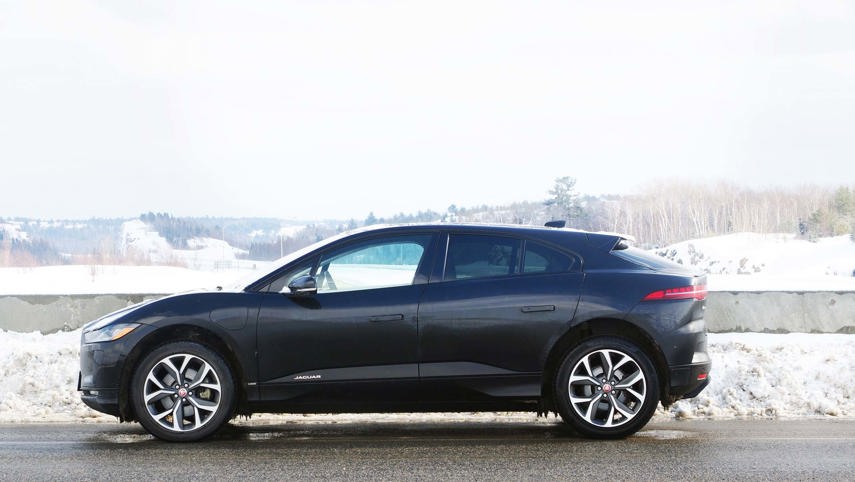
On a Sunday drive down a winding, snow-covered (and empty) backroad.
The AWD system and instantaneous torque mean that long, lazy, predictable and dramatic power-slides are yours for the taking. Just click “Dynamic Mode” then “Traction Control Off”. The I-Pace is very stable and surefooted – but it’s also more than happy to send additional wattage to the rear motor for noiseless skids.
The tail-happy, easily controllable winter driving dynamic in this setting reminds me of a BMW M850i or a Kia Stinger – both of which have rear-biased AWD systems.
With my camera at hand, and the I-Pace’s noiseless operation, my Sunday drives also included sneaking up quietly to photograph even the tamest wildlife within view of the road.
My Least-Favourite Way to Use the I-Pace in Winter
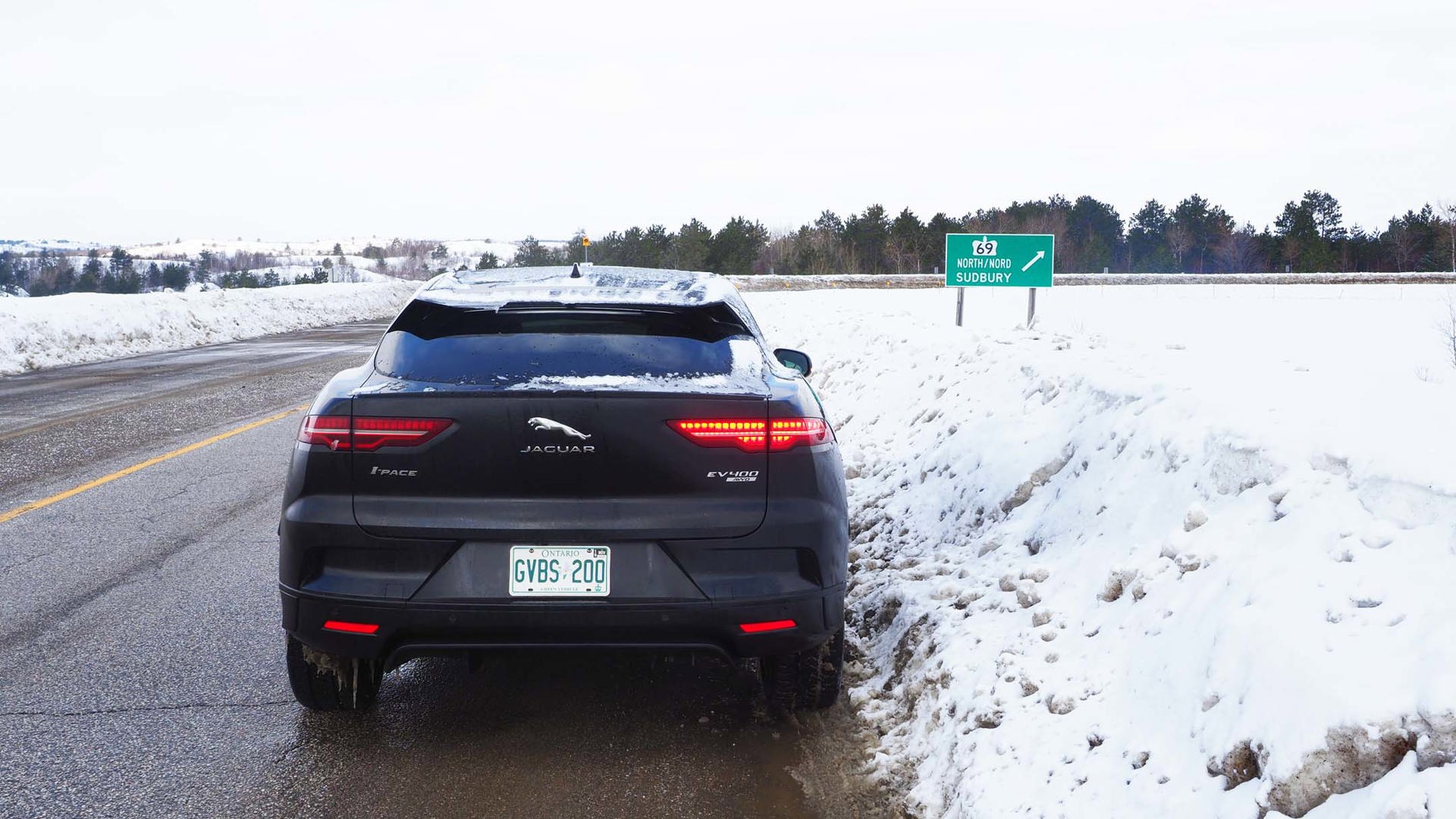
On long highway drives through what our beloved Editor, Michael Bettencourt, refers to as the “charging station desert” of Northern Ontario.
My weekly trip from Sudbury to Toronto is about 400 kilometres long. With about 300 kilometres of range possible (less with the heat on), and the first Level 3 Charging station available being some 275 kilometres south of home, the trip is doable – though just – and likely not if you turn on the heat
Charging Notes
EV charging happens at Level 1, Level 2, or Level 3. The higher the number, the faster the charge. Level 1 is a household power outlet, at 110 volts. On my test drive, use of Level 1 charging for 10 hours at about -18 degrees Celsius added very minimally to the battery, though I suspect it would be sufficient for long-term trickle-charging in warmer temperatures.
On the level 2 charger installed to my house, an overnight charge (even at 25 below) was sufficient to fill the battery without fail. On warmer winter days, my home charger could fill the battery from about 30 percent in about 6 hours. Translation? Level 2 overnight charging (for about 8–10 hours) will fill the I-Pace’s battery fully, even in extreme cold.
Connected to a Level 3 public fast charger I visited twice on my test drive, recharge times are much quicker. On a warmer winter day (about -5 degrees), 70 minutes was sufficient to bring the charge from 40 percent to 95 percent. On a colder morning (about -18 degrees), I charged the battery from 20 percent to 90 percent in a little over 90 minutes.
On Level 3, the I-Pace battery charges more slowly, the fuller it gets. It might take 20 minutes to get to 95 per cent, and another 10 minutes to get to 100.
Plan Around the Infrastructure, and Plan for Delays
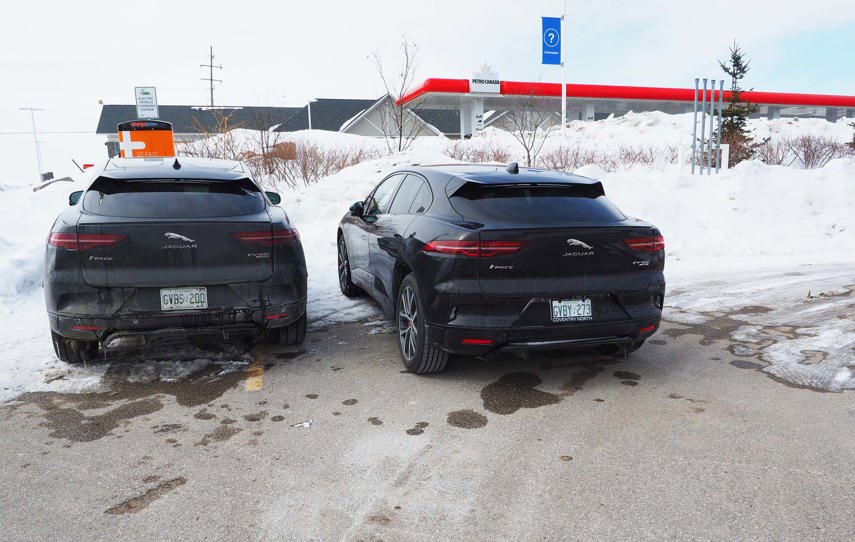
In my specific neck of the woods, public EV charging stations aren’t cared for like gas pumps. One charging station I visited hadn’t been used in two weeks, according to the smartphone app required to activate it.
I regularly experienced public chargers that were broken, suffering from fault codes, or that (for reasons unknown) took multiple attempts to switch on – sometimes requiring as much as 30 minutes of fiddling or chatting with a tech-support agent to remedy.
On two occasions, I had to dig my way into charging stations that were partially buried in snowbanks. One of these was just 40 feet from a nicely maintained gas station.
One another occasion, a Level 3 fast charger station I’d planned on using was occupied by another EV, who didn’t return to unplug their car in the 90 minutes I waited for them. In this particular situation (and luckily), there was a Level 2 charger nearby, so I used that instead.
Level 2 chargers are much slower than Level 3 chargers, so this situation could easily add several hours to a trip. Ditto a broken charger.
A Few “Duh” Moments
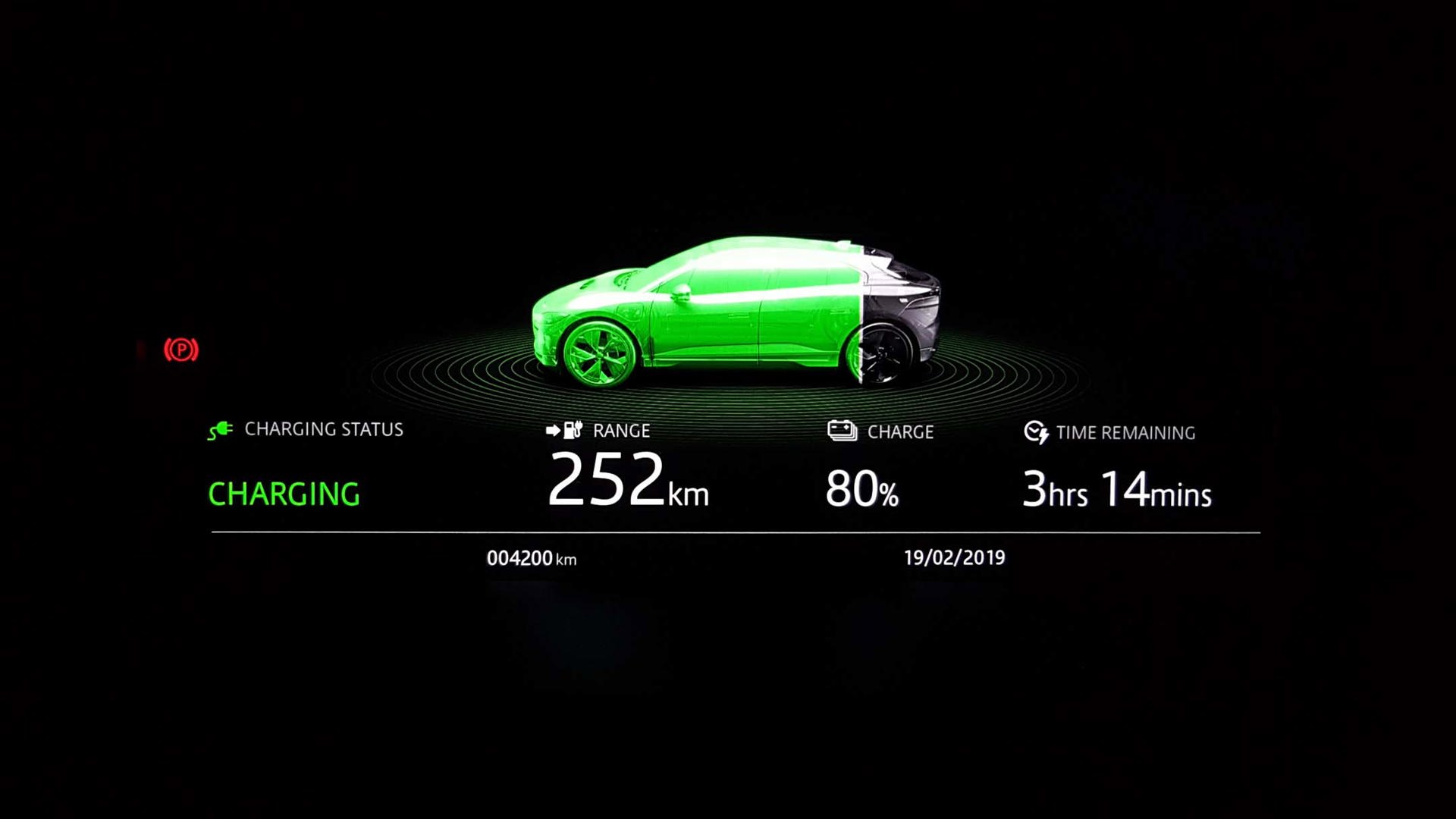
I had at least two “duh” moments on this test drive assignment, which was my first with a full EV.
Number one is supremely obvious – especially for EV owners – though it only registered with this writer after a few days: unlike your gas car, you refuel your EV every night when you plug it in before bed. This means you wake up every morning, automatically, to a full “tank”. It took a few days for me to register how convenient a thing this is.
Number two was a surprise. After a few days, a nervous pang began appearing in my stomach every time I passed a gas station. My brain, realizing that we hadn’t been to a gas station in some time, assumed that our gas tank must surely be empty. After a split-moment, you realize you no longer need gas stations, and you keep on driving.
Passing every single gas station, every single time, never gets old.
Trust Building
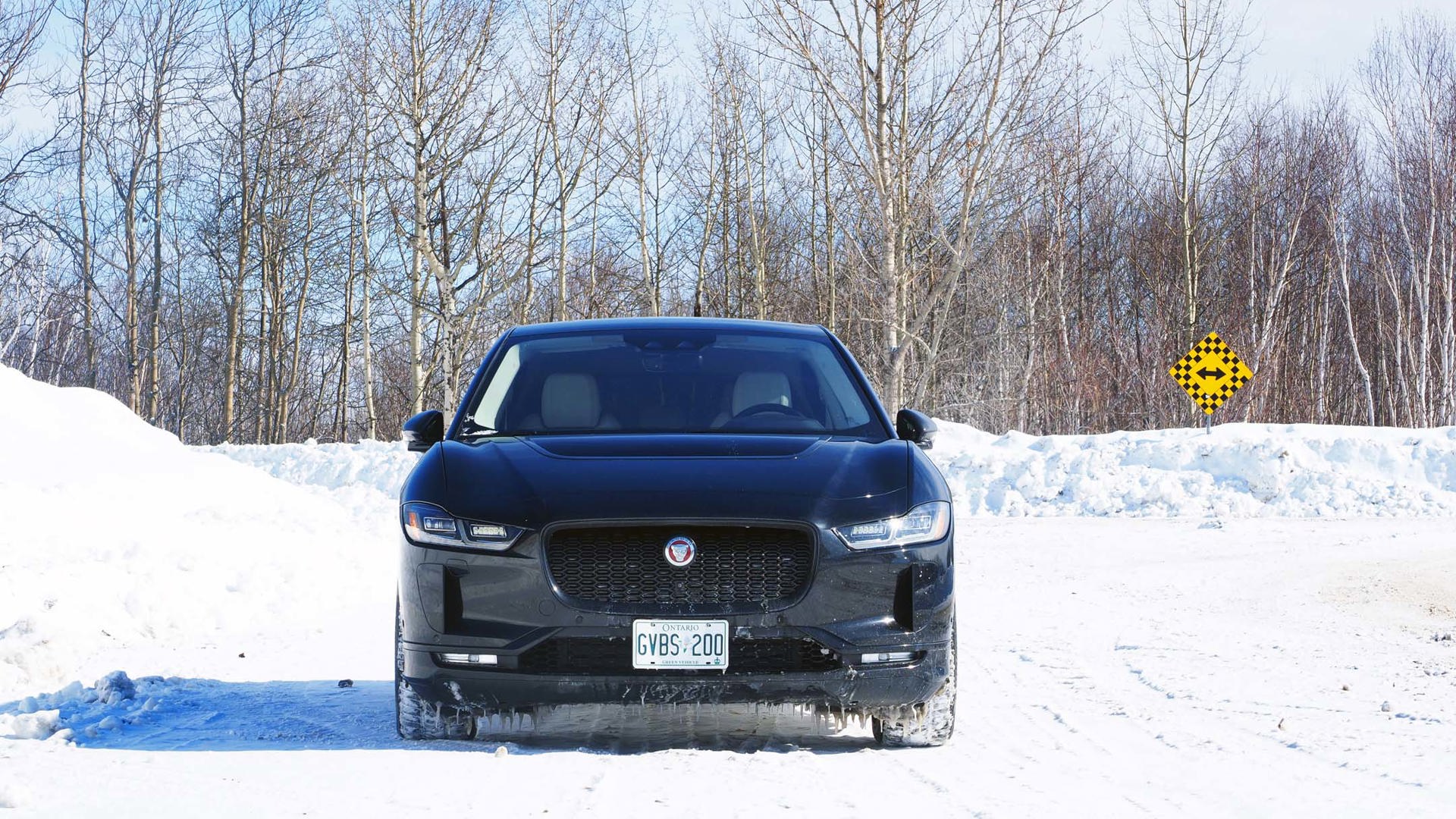
My initial drive home with the I-Pace, which pushed both the vehicle’s range and your writer’s ability to stay warm with minimal use of the heat, was stressful.
The main cause of the stress was a fluctuation in the difference between my “remaining range” and “distance to home” figures. On one leg of my drive that pushed the I-Pace’s range out of my comfort zone, I had charged for a 60 kilometre range surplus, but that surplus did some significant flip-flopping, sometimes dropping to as low as just 32 kilometres. Typically, it hovered around 45.
Accordingly, I took steps to keep the battery a good deal more full than I needed on the initial drive home.
After the initial long-distance drive, the fluctuation stopped. I suspect that the I-Pace needs time to learn its new driver, and its new locale, before the range figure becomes fully trustworthy.
The I-Pace will continue to learn as you continue to drive it, though I’d advise new drivers take their first long-distance drive as a trust-building experience that’ll benefit them for years to come.
